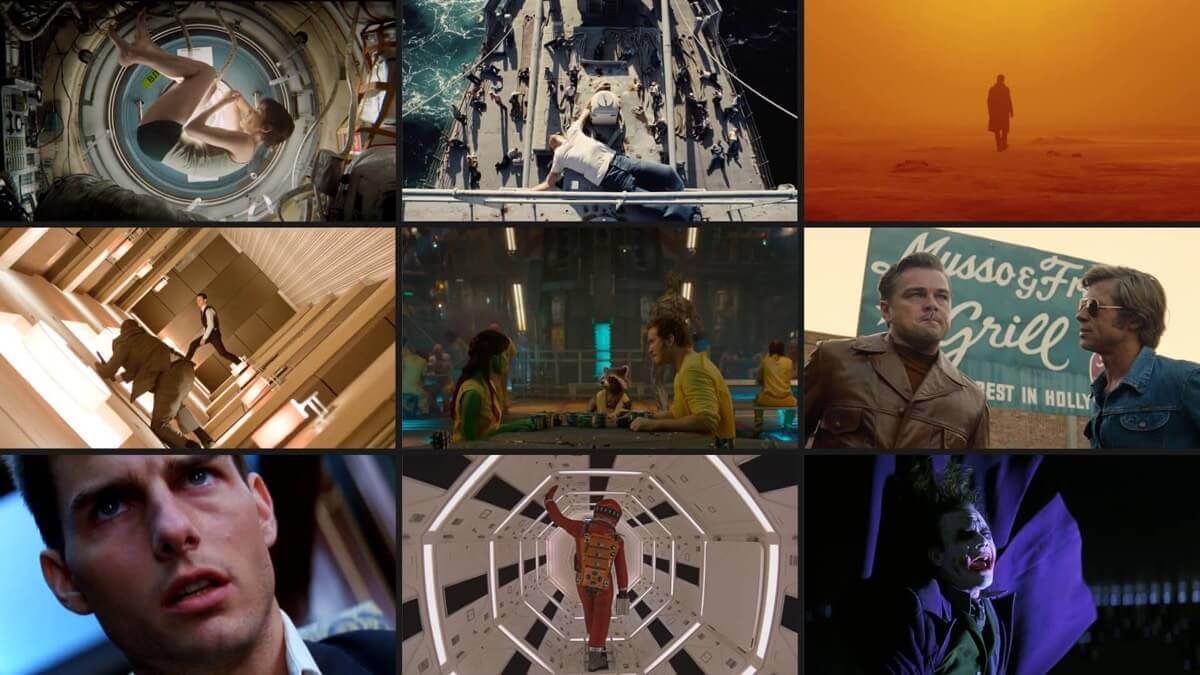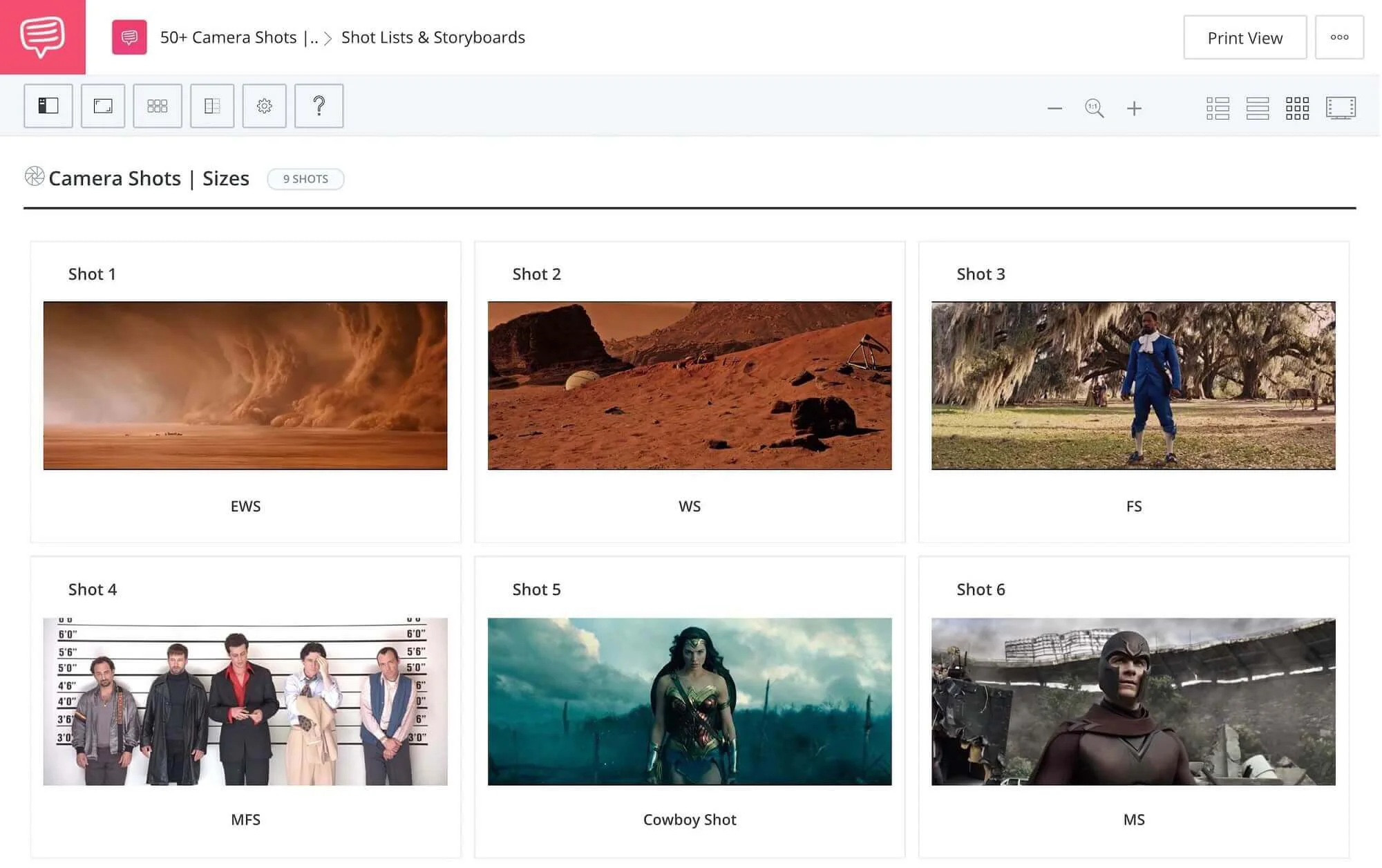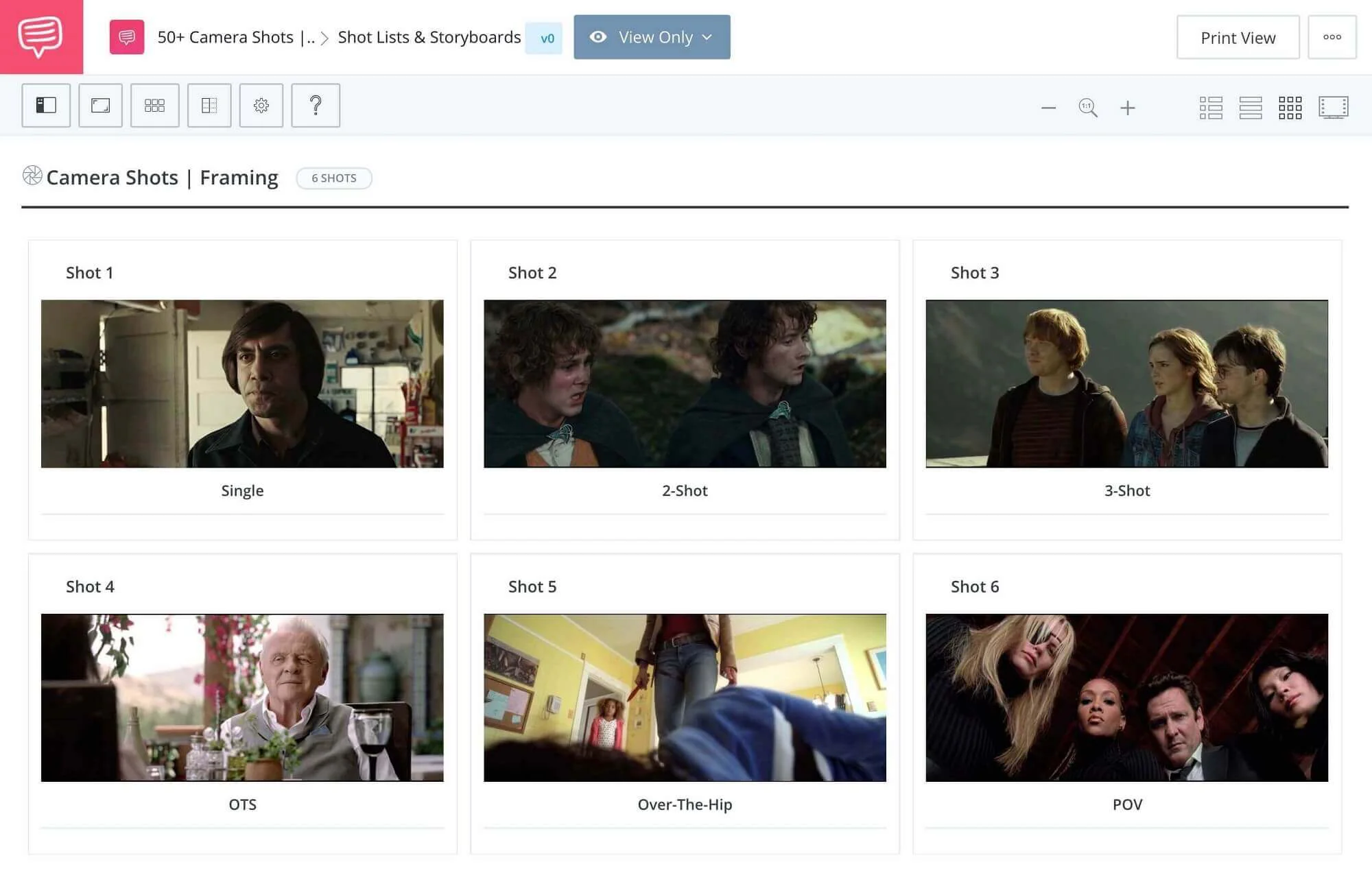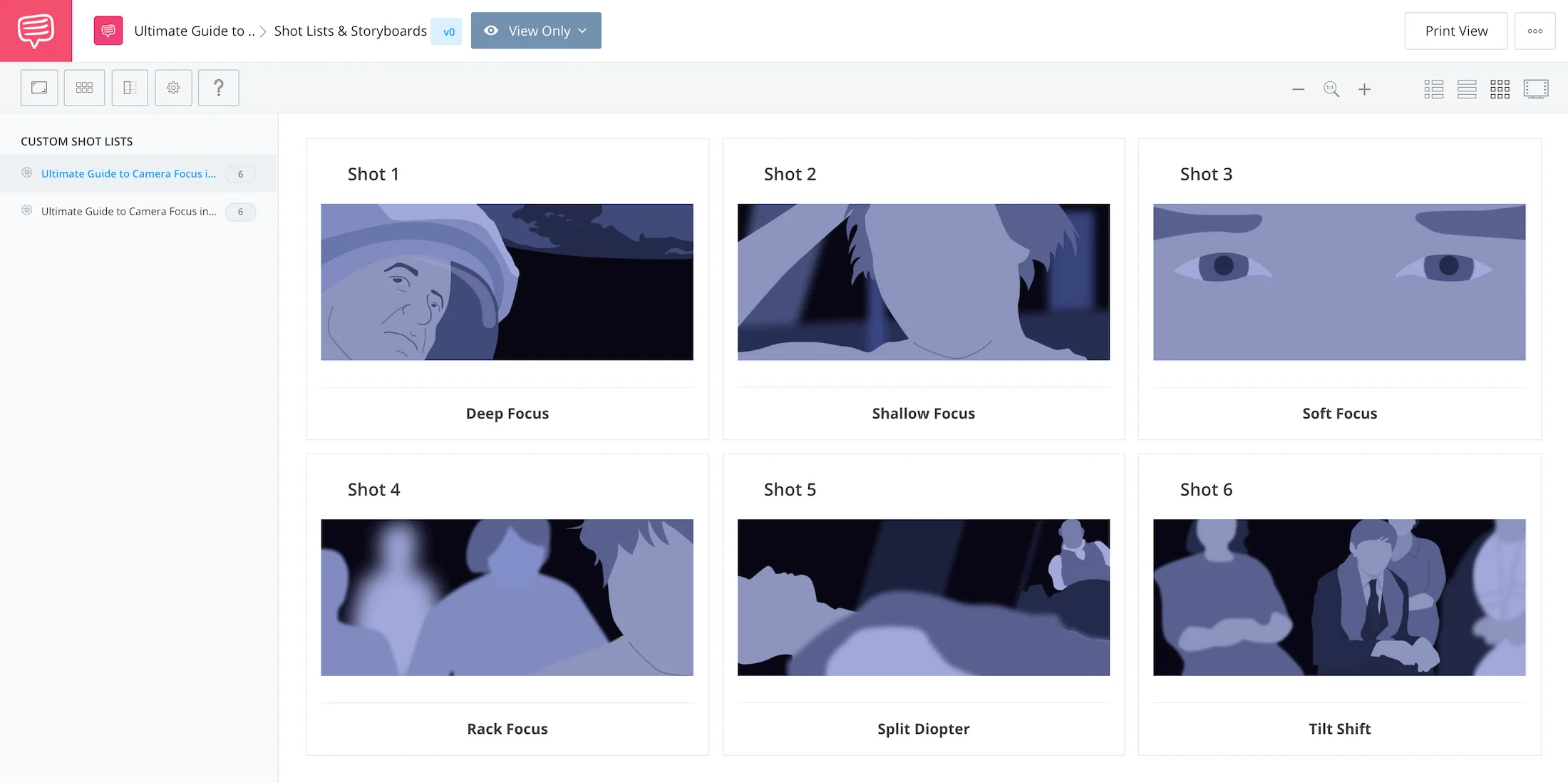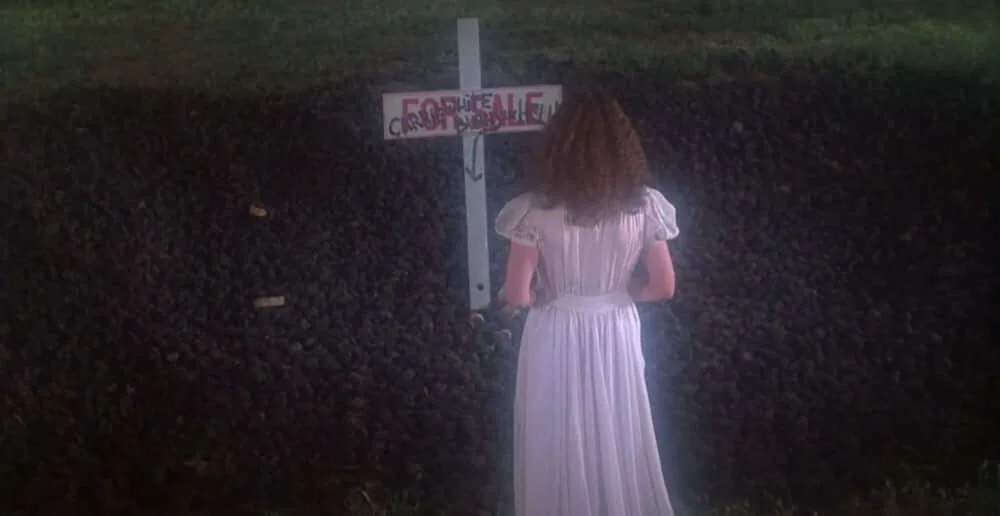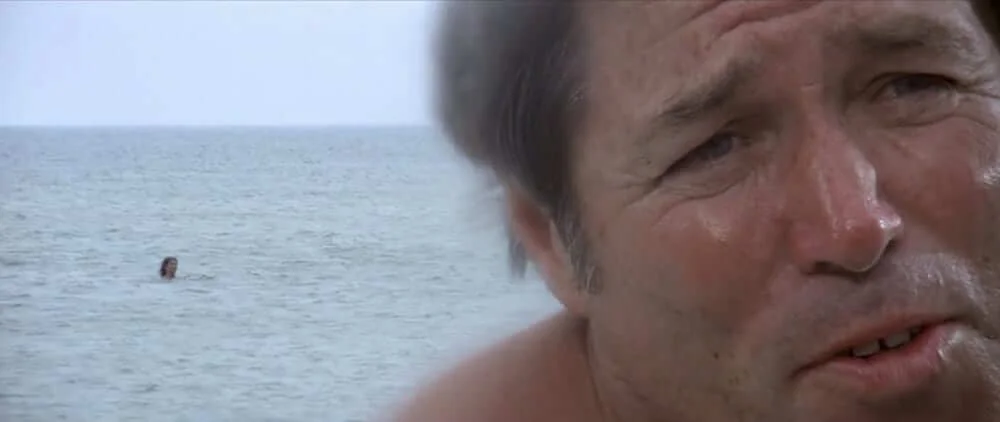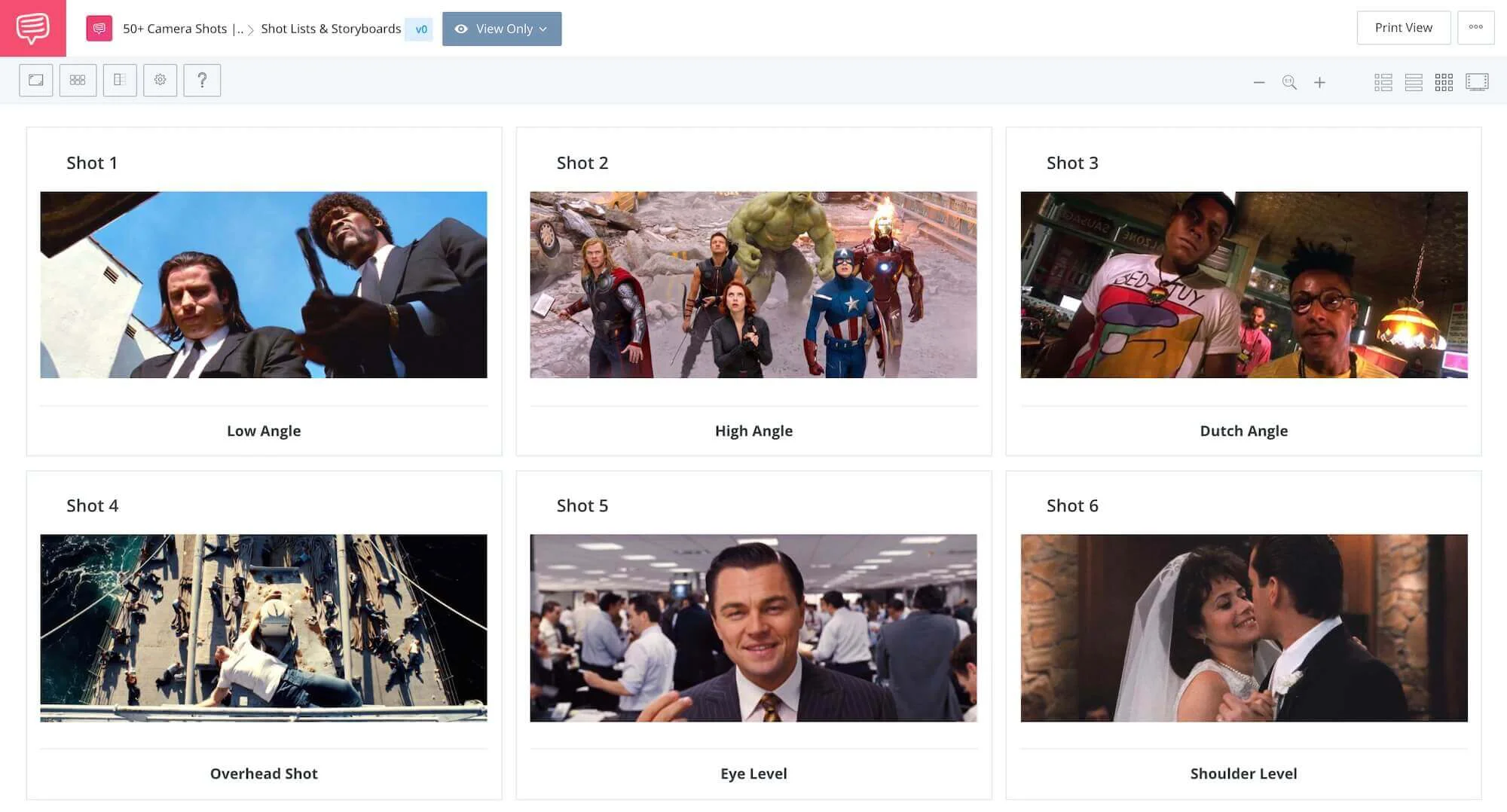It’s easy to mix up the different types of camera shots and types of angles. To make a shot list, a filmmaker or video creative must know the classic types of shots based on attributes like shot size, shot framing, camera movement, camera mechanisms, and depth of field.
We’ll break down all the camera shots and angles you need to know for your next film. We also include camera shot examples from famous movies to help solidify the discussed concepts.
1
Camera ShotS
THE DIFFERENT TYPES OF CAMERA SHOTS
Camera Shot DEFINITION
What is a camera shot?
A camera shot is composed of the series of frames that are shot uninterrupted from the moment the camera starts rolling until it stops. Camera shots are an essential aspect of filmmaking and video productions, because by combining different types of shots, angles and camera movements, the filmmakers are able to emphasize specific emotions, ideas and movement for each scene.
Types of Camera Shots — The Shot Size
Camera Shot Size Overview
Below you'll find a shot size cheatsheet to see exactly how different shot sizes will look on screen, and how to differentiate the various shot sizes:
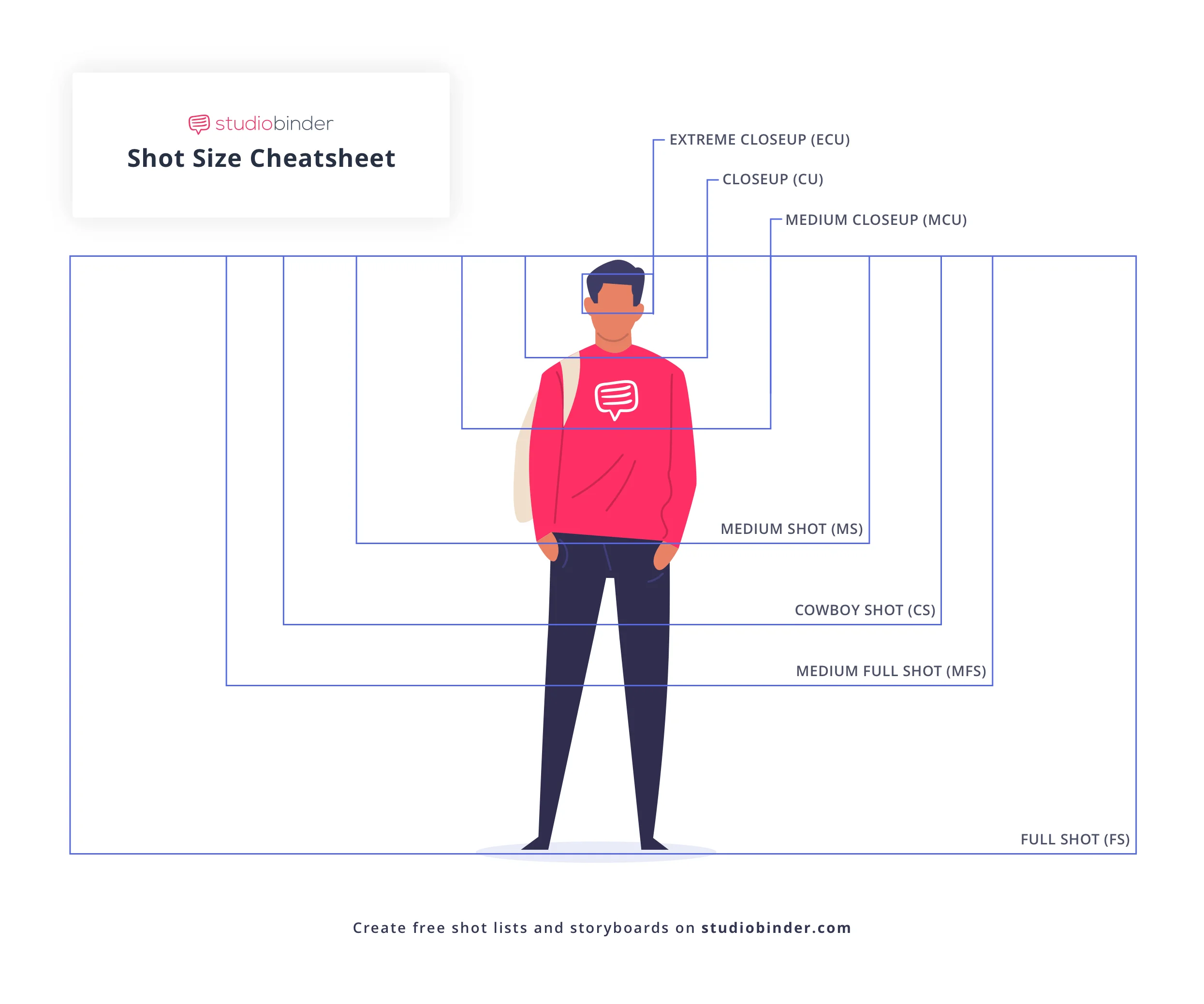
Types of camera shots by size
At the bottom of this section we provide a link to a PDF shot list that has examples of each shot sized used in popular films and television shows.
Okay, onto shot sizes! This video breaks down the essential shot sizes — from establishing shots all the way to extreme close-ups.
Shot Sizes Explained • Subscribe on YouTube
Types of Camera Shot Sizes
Types of Shots By Size
Extreme Long Shot (ELS) or Extreme Wide Shot (EWS)
An extreme long shot (or extreme wide shot) make your subject appear small against their location. You can use an extreme long shot to make your subject feel distant or unfamiliar.
Take a look at this extreme wide shot from one of the best action movies Mad Max: Fury Road:
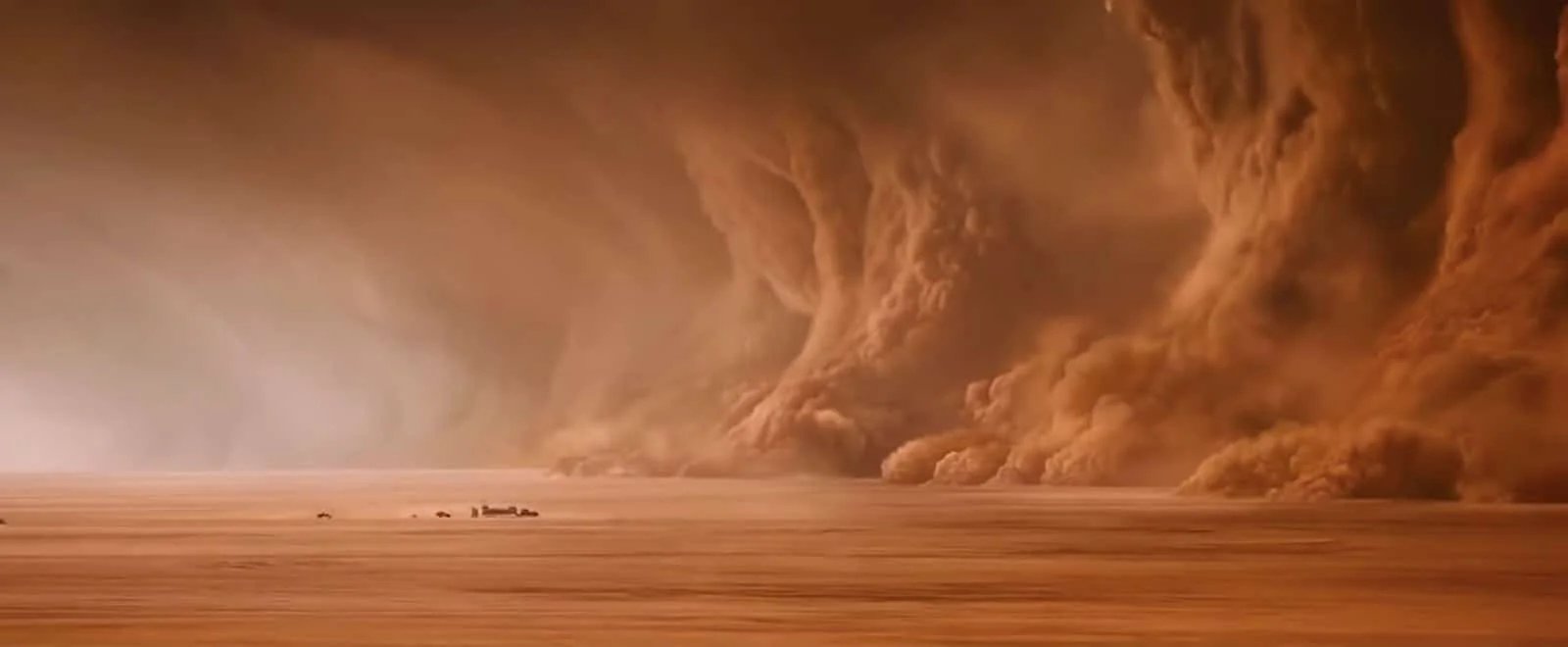
(EWS) Extreme Wide Shot Example in Mad Max: Fury Road
It can also make your subject feel overwhelmed by its location. Of all the various camera shots out there, consider using the extreme long shot when you need to emphasize the location or isolation.
Types of Shot sizes
Long Shot (LS) or Wide Shot (WS)
The long shot (also known as a wide shot, abbreviated “WS”) is the same idea, but a bit closer. If your subject is a person then his or her whole body will be in view — but not filling the shot. Here's an example of the wide shot size from one of the best 2015 movies The Martian:
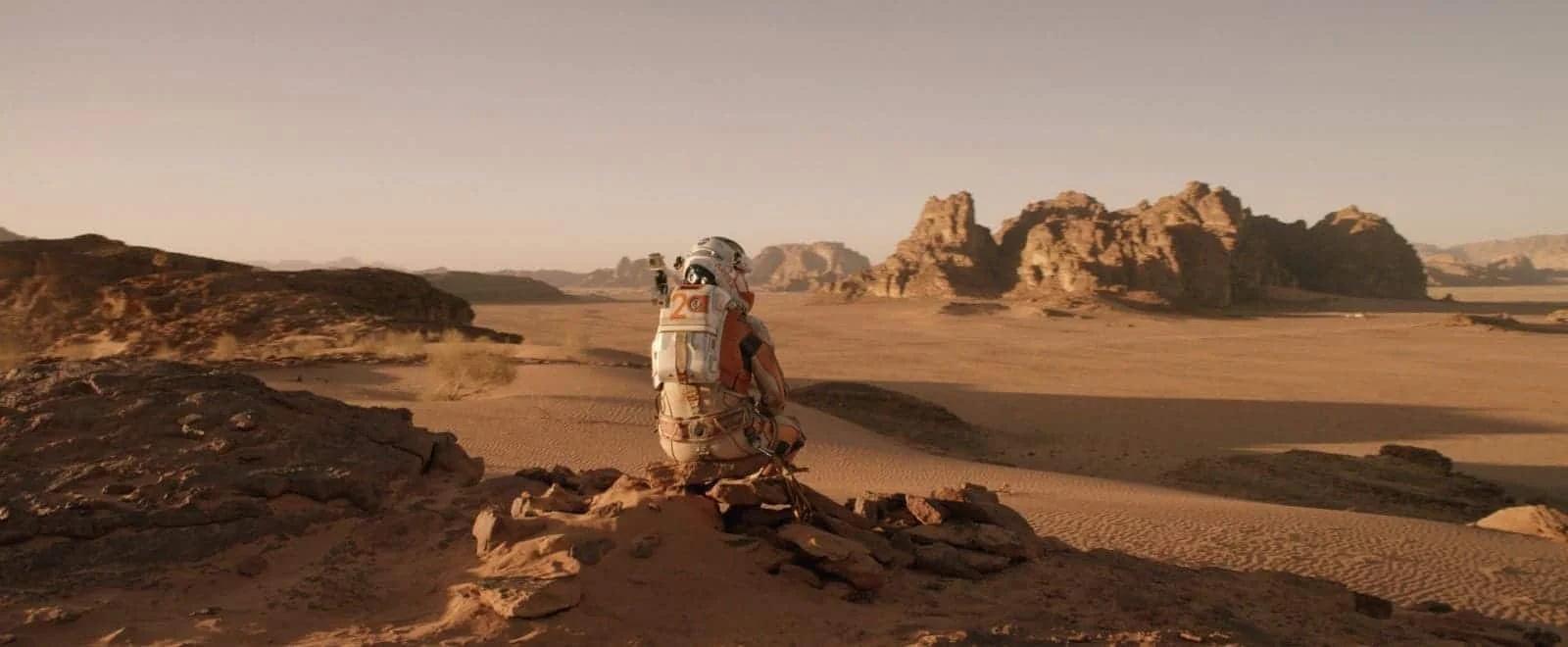
(WS) Wide Shot Example in The Martian
In other words, there should be a good deal of space above and below your subject. Use a long shot (or wide shot) to keep your subject in plain view amidst grander surroundings.
The wide shot also lets us see the beautiful background imagery, as well as the onlookers which will make any big moment more cinematic.
Of the many camera shots, a long shot gives us a better idea of the scene setting, and gives us a better idea of how the character fits into the area.
Types of Camera SHOTS
Full Shot (FS)
Now let's talk about camera shots that let your subject fill the frame while keeping emphasis on scenery.
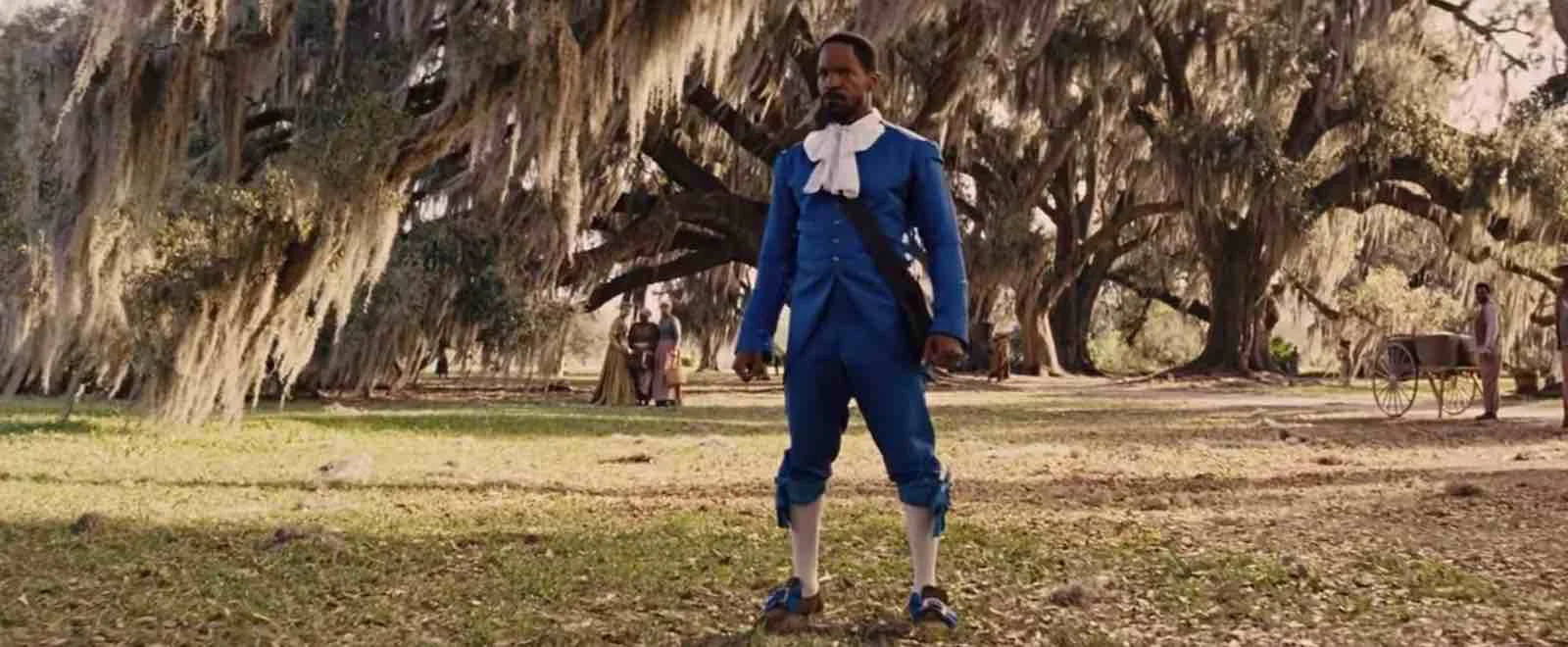
(FS) Full Shot Example in Django Unchained
This full shot from one of the best Quentin Tarantino movies Django Unchained is also a tracking shot — meaning there is camera movement featured throughout the shot. In this particular case, the camera slowly moves (or tracks) towards Django. So, technically, this shot begins in a wide shot, moves to full shot (seen above), and eventually ends in a cowboy shot.
Of all the different types of camera shots in film, full shots can be used to feature multiple characters in a single shot, like this full shot size example from Marvel's Guardians of the Galaxy:
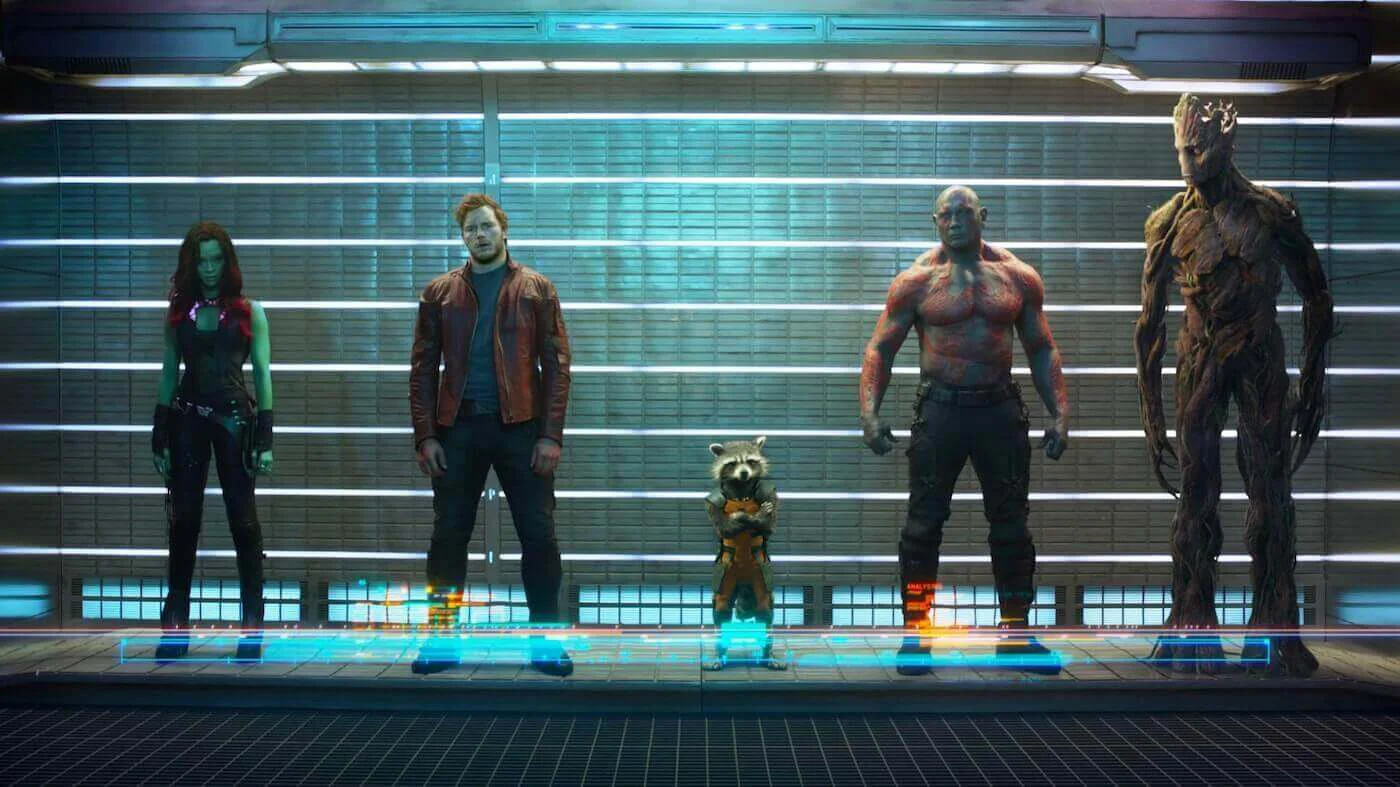
(FS) Full Shot Example in Guardians of the Galaxy
Types of Camera Shot Sizes
Medium Wide Shot (MWS)
A medium long shot (aka medium long shot) frames the subject from roughly the knees up. It splits the difference between a full shot and a medium shot. Here's an example of the medium wide shot size from one of the best crime movies, The Usual Suspects:
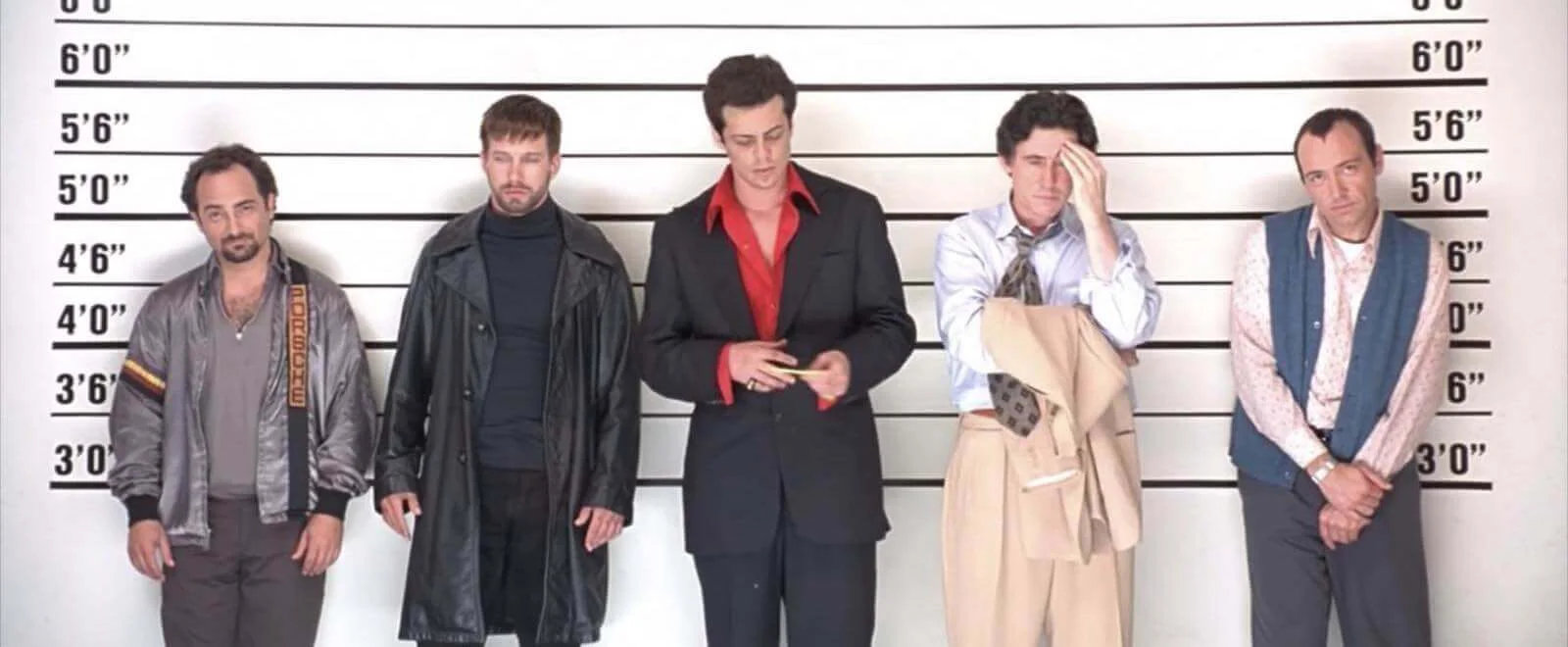
(MWS) Medium Wide Camera Shot Example in The Usual Suspects
You can always frame camera shots from any angle as well, so don't be afraid to think about medium long shots when behind a character.
Types of Camera Shots
Cowboy Shot (CS)
A variation on this is the Cowboy Shot, which frames the subject from roughly mid-thighs up. It’s called a “cowboy shot” because it is used in Westerns to frame a gunslinger’s gun or holster on his hip. Here's an example of the cowboy shot size from one of the best movies of 2017 Wonder Woman:
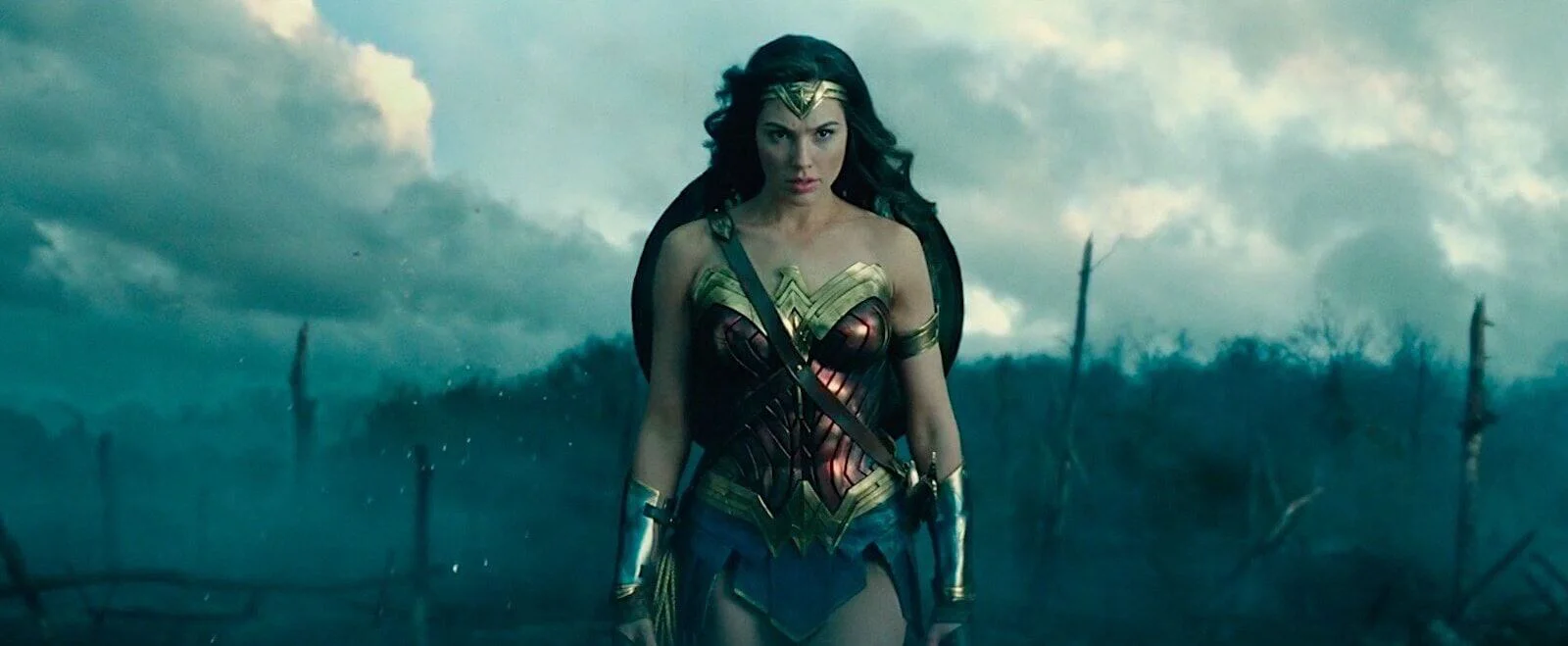
(CS) Cowboy Shot Camera Shot in Wonder Woman
Here is an example of a cowboy shot that's used in a film that has nothing to do with cowboys, and it's also a "three shot":
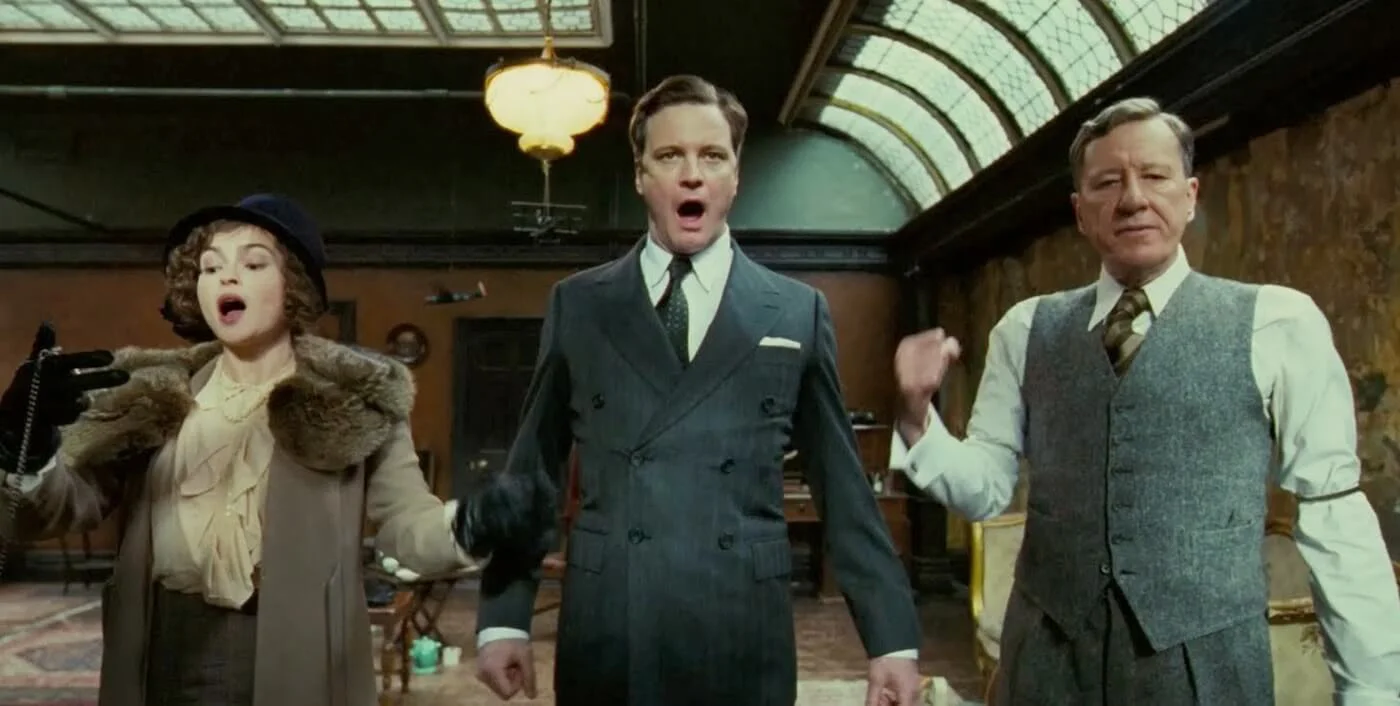
(CS) Cowboy Shot Example in The King’s Speech
TYPES OF SHOTS By Shot Size
Medium Shot (MS)
Let's move onto camera shots that reveal your subject in more detail.
The medium shot is one of the most common camera shots. It's similar to the cowboy shot above, but frames from roughly the waist up and through the torso. So it emphasizes more of your subject while keeping their surroundings visible. Here's an example of the medium shot size from one of the best superhero movies X-Men: Days of the Future Past:
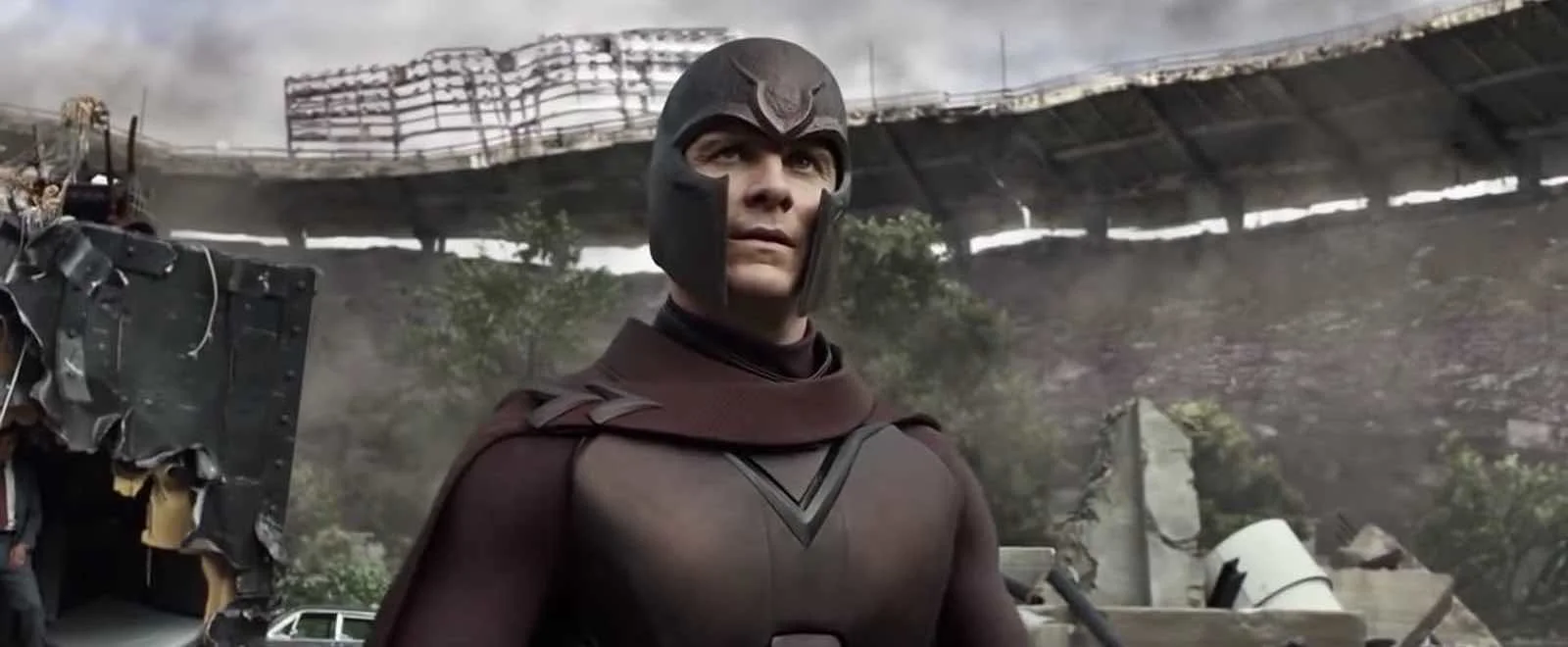
(MS) Medium Shot Example in X-Men: Days of Future Past
Medium shots may seem like the most standard camera shot around, but every shot size you choose will have an effect on the viewer. A medium shot can often be used as a buffer shot for dialogue scenes that have an important moment later that will be shown in a close-up shot.
If you don't use all of the different types of camera shots in film, how can you signal anything to your viewer without shot size contrast.
TYPES OF CAMERA SHOTS
Medium Close Up Shot (MCU)
The medium close-up frames your subject from roughly the chest up. So it typically favors the face, but still keeps the subject somewhat distant.
Here's an example of the medium close-up shot size from one of the Coen Brothers’ masterpieces No Country for Old Men:
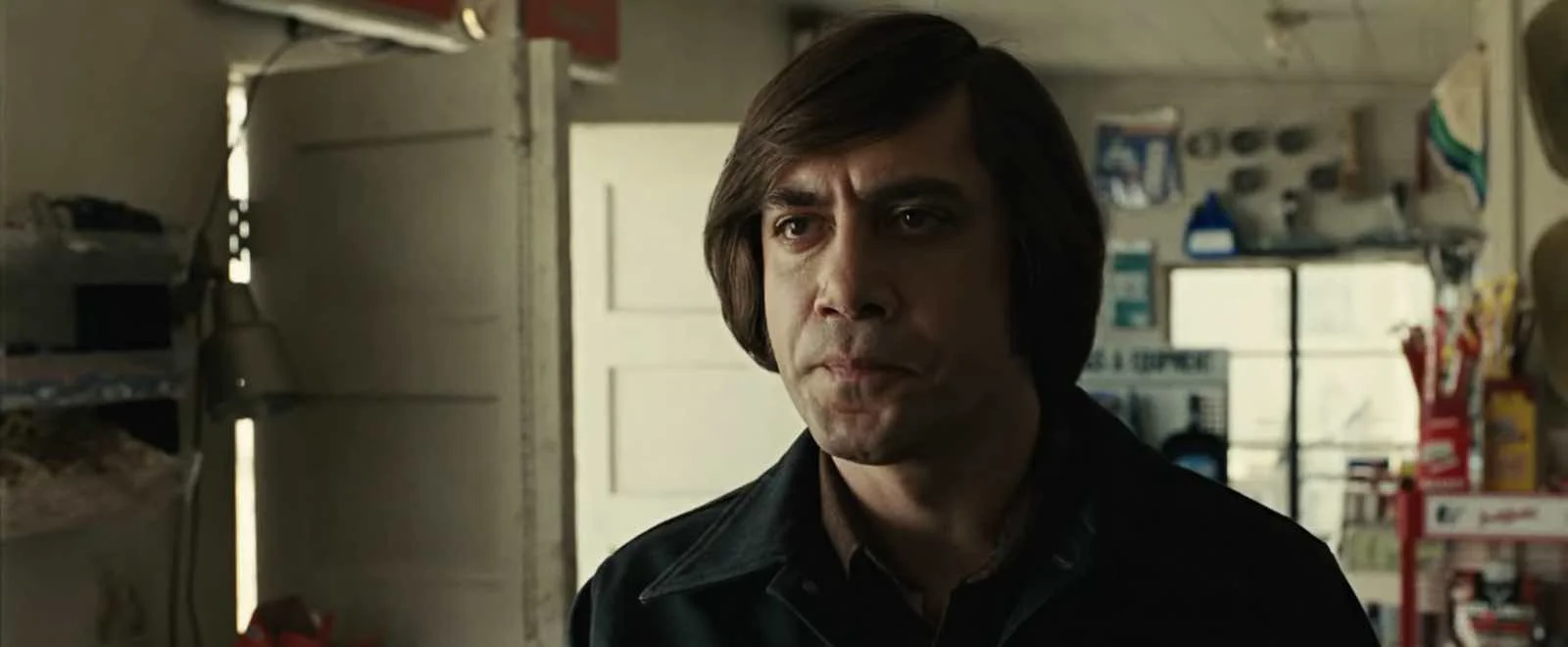
(MCU) Medium Close Up Shot Example in No Country for Old Men
The medium close-up camera shot size keeps the characters eerily distant even during their face-to-face conversation.
TYPES OF CAMERA SHOTS
Close Up (CU)
You know it’s time for a close-up shot when you want to reveal a subject’s emotions and reactions. The close-up camera shot fills your frame with a part of your subject. If your subject is a person, it is often their face. Here's an example of the close-up shot size:
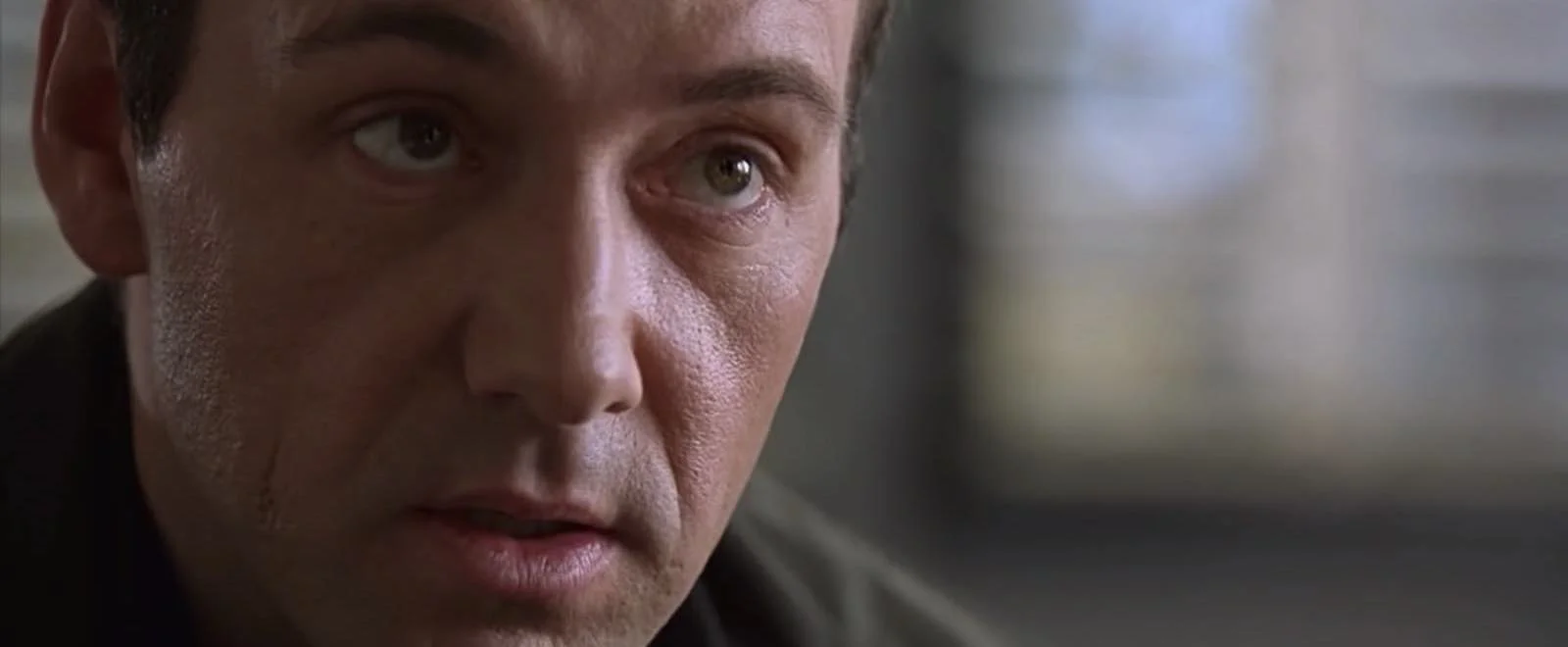
(CU) Close-Up Shot Example in The Usual Suspects
Of all the different types of camera shot sizes in film, a close-up is perfect for important moments. The close-up shot size is near enough to register tiny emotions, but not so close that we lose visibility.
TYPES OF Camera SHOT Sizes
Extreme Close Up (ECU)
An extreme close-up is the most you can fill a frame with your subject. It often shows eyes, mouth and gun triggers. In extreme close-up shots, smaller objects get great detail and are the focal point.
Use an ECU to emphasize a specific feature of your subject:
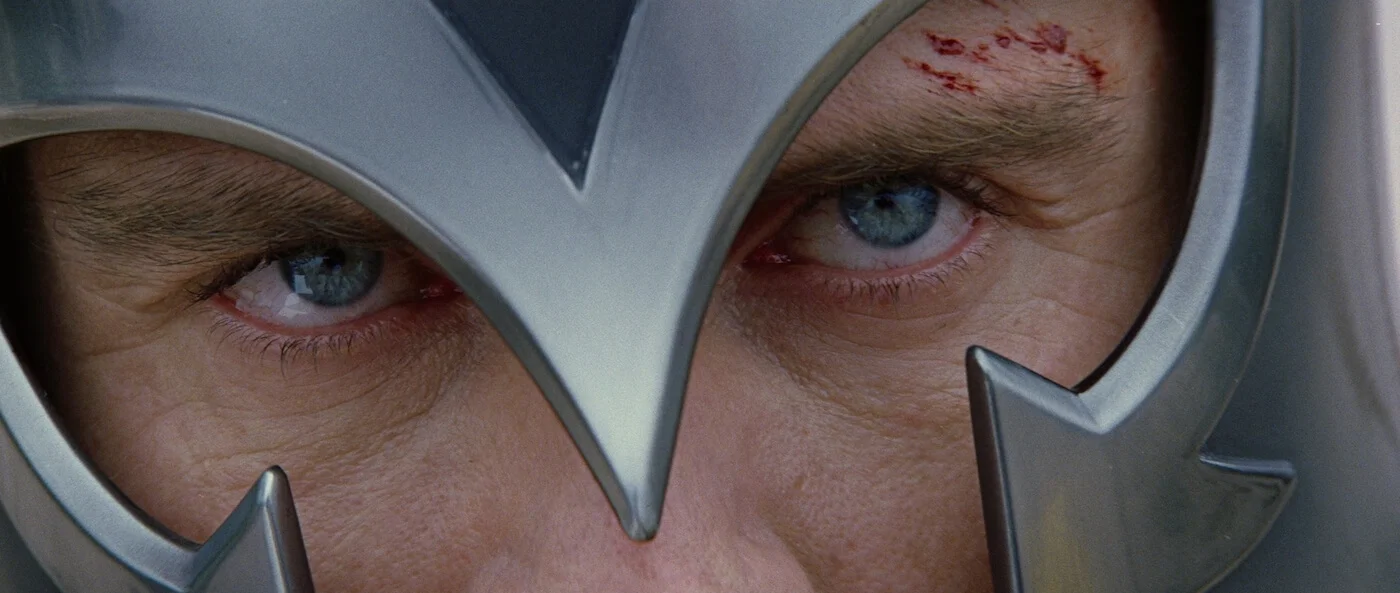
(ECU) Extreme Close-Up Camera Shot Example in X-Men: First Class
Visionary filmmaker, Darren Aronofsky uses various degrees of close-ups in his work, like in one of his best films Black Swan. In this extreme close-up, we see that her transformation happens quite literally. Aronofsky uses the extreme close up shot size to show feathers growing in Nina’s back.
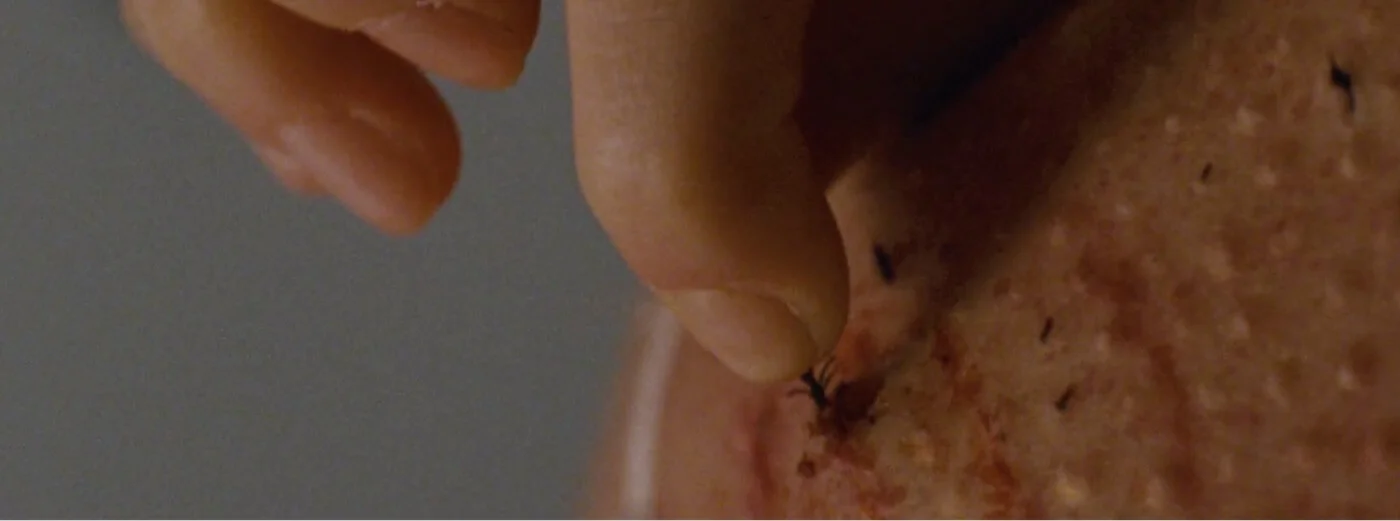
(ECU) Extreme Close-Up Example in Black Swan
Extreme close-ups can be used in many different film genres, which includes comedy as well. Here's an ECU example:
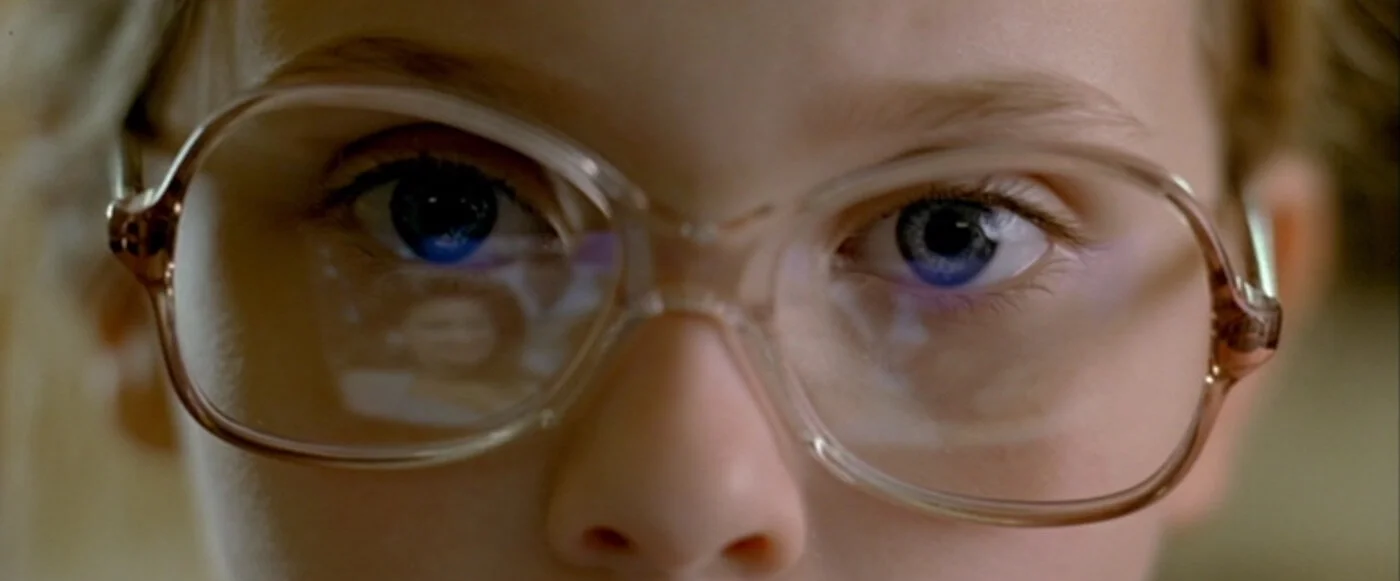
Type of camera shots example: (ECU) Extreme Close Up in Little Miss Sunshine
Establishing Shots
It all starts with an establishing shot
An establishing shot is a shot at the head of a scene that clearly shows us the location of the action. This shot often follows an aerial shot and is used to show where everything will happen.
Consider the following examples:
Type of camera shots: Shooting Great Establishing Shots • Subscribe on YouTube
We cover a lot of shot specs in this post, but don't worry. You don't need to memorize everything in this post. If you use StudioBinder when shot listing, all these specs are listed as checkboxes for easy selection.
This allows you to focus on creativity rather than spending effort attempting to recall shot jargon or retyping acronyms 5000 times.
Types of Camera Shots — The Shot Size
Camera Shot Size Summary
How you choose to frame your subject will have a specific impact. How close or far your subject is to your camera — your shot size — will underscore how the audience should feel about it (or them).
Your subject will appear smallest in a long shot (or wide shot). They will be larger in a medium shot and largest in a close-up shot.
Here is a shot list with every shot size organized from wide to near:
Types of Camera Shot Sizes • Shot Listed in StudioBinder
You can create a PDF of this shot list to print or store digitally.
Think about familiarity when you consider your subject’s size in your camera shots. It’s like meeting someone for the first time. You might shake hands or talk about the weather, but odds are you’ll stay at a relative distance. That’s because you haven’t built any familiarity yet.
Shot size is the building block for choosing camera shots, but you’ll also need to consider how framing, focus and movement can add deeper meaning to your shots. Read on to explore creative shot combinations.
Specific camera movements matter too. Are you going to rack focus while completing a dolly move? Or maybe it’s just a traditional two shot on sticks? You want to capture all these details when shot listing.
2
Camera Framing
WORKING WITH SUBJECTS IN THE FRAME
Types of Camera Shot Framing
For filmmakers and videographers, a major consideration for framing is the number of subjects you feature in your shots, and their physical relationship to each other and the camera.
Camera shot Framing DEFINITION
What is camera shot framing?
Camera shot framing is the art and science of placing subjects in your shots. Camera shots are all about composition. Rather than pointing the camera at the subject, you need to compose an image.
Based on how you plan to position your subjects, you'll need to adjust your camerawork. You'll want to capture your framing details on a shot list well before you arrive on set. That way you have a clear idea for the scene and can communicate your vision with ease.
That's not to say that things may not change the day of the shoot. But, having a shot list at the ready showcases that the director and DP have done their homework and are well prepared.
This video is a quick rundown of all the types of shot framing, how they work, and when you might consider using them in your next project.
Ultimate Guide to Shot Framing • Subscribe on YouTube
Here is a shot list showcasing all the types of shot framing that you can download and use as a reference the next time you sit down to shot list:
Types of Camera Shot Framing • Shot Listed in StudioBinder
Types of camera shot framing in film
Single Shot
When your shot captures one subject it’s known as a single shot:
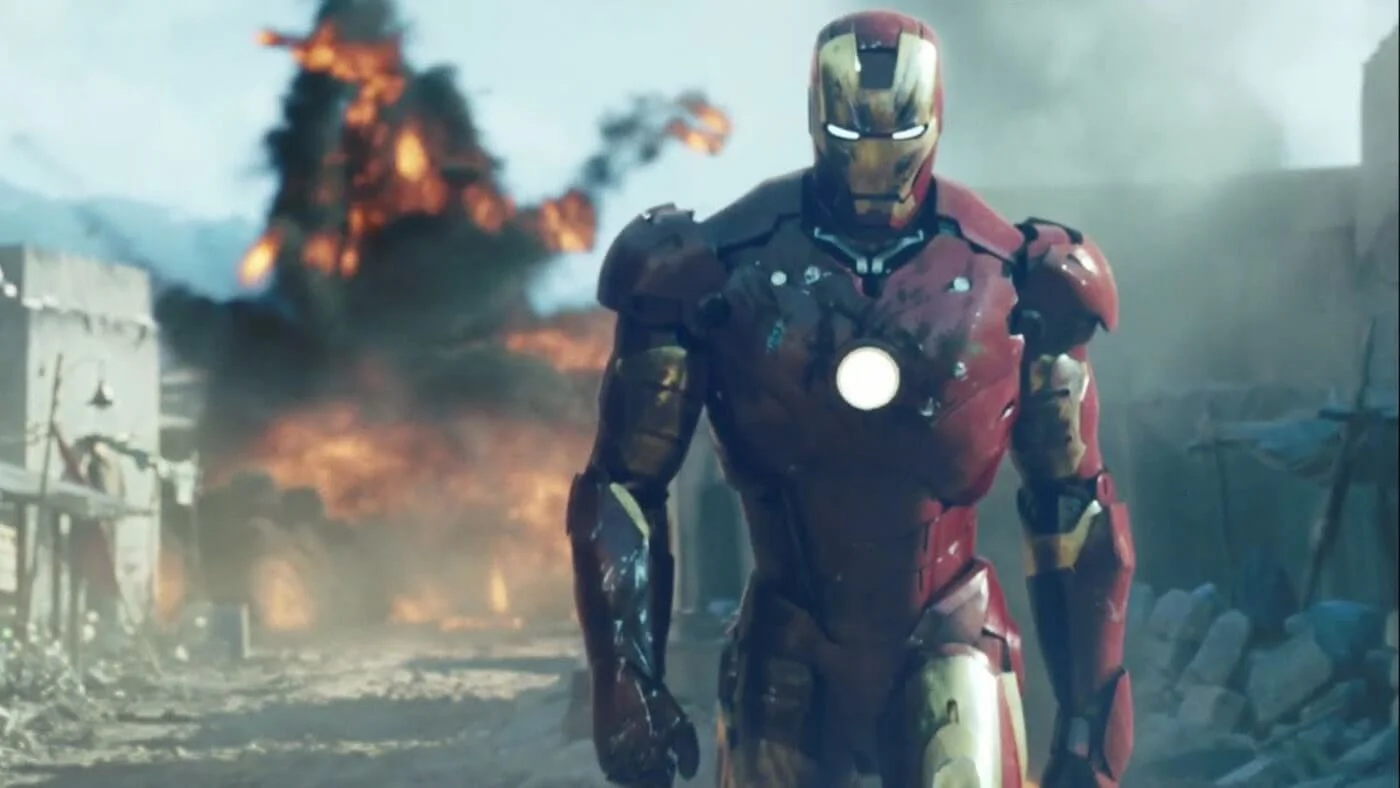
Type of camera shots example: Single Shot in Iron Man
Single shots can be set and framed in any shot size you like, just as long as there is only one character featured within the frame.
Now, why did I say featured rather than simply in the frame?
The reason is because you can have an over-the-shoulder single, also known as a "dirty single" that technically has more than one person in the frame, but the character in the foreground isn't featured:
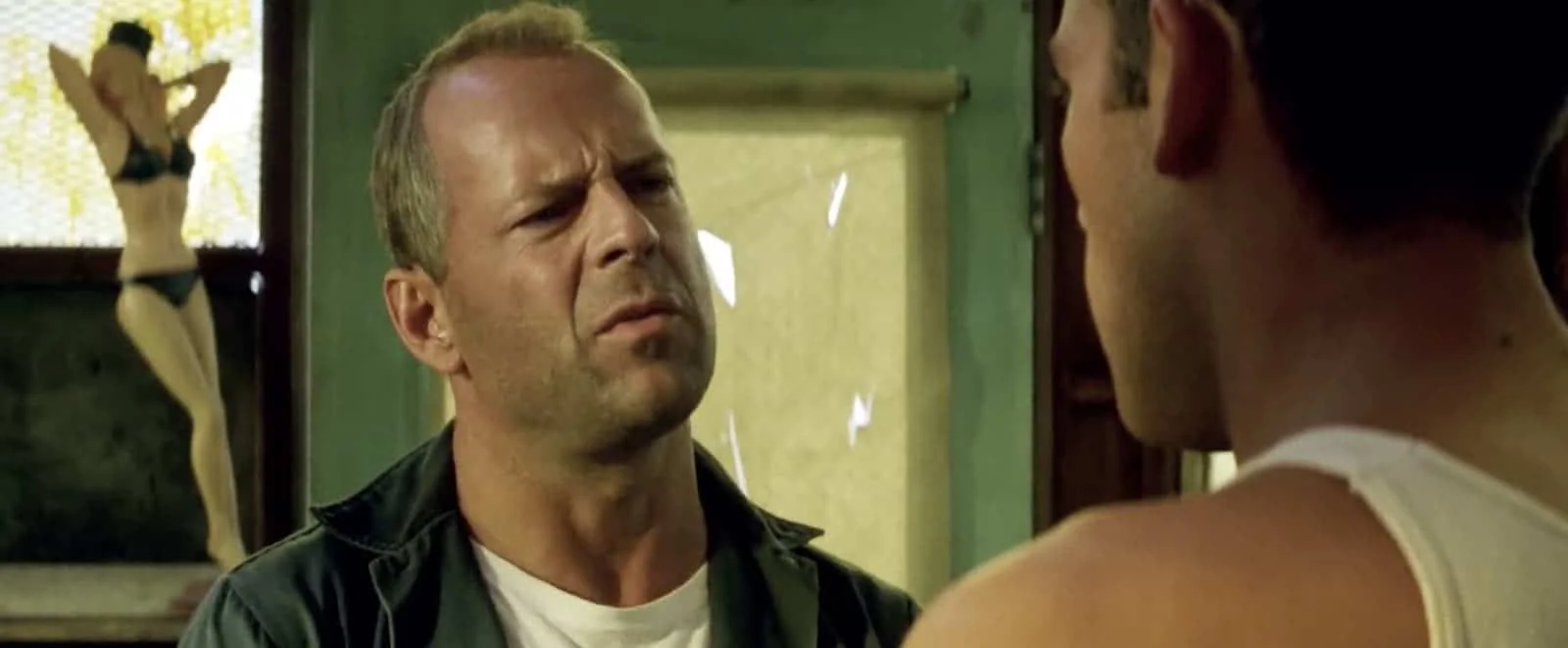
Type of camera shots example: Over-The-Shoulder Shot in Armageddon
Types of Framing
Two Shot or 2-Shot
A two-shot is a camera shot with two characters featured in the frame:
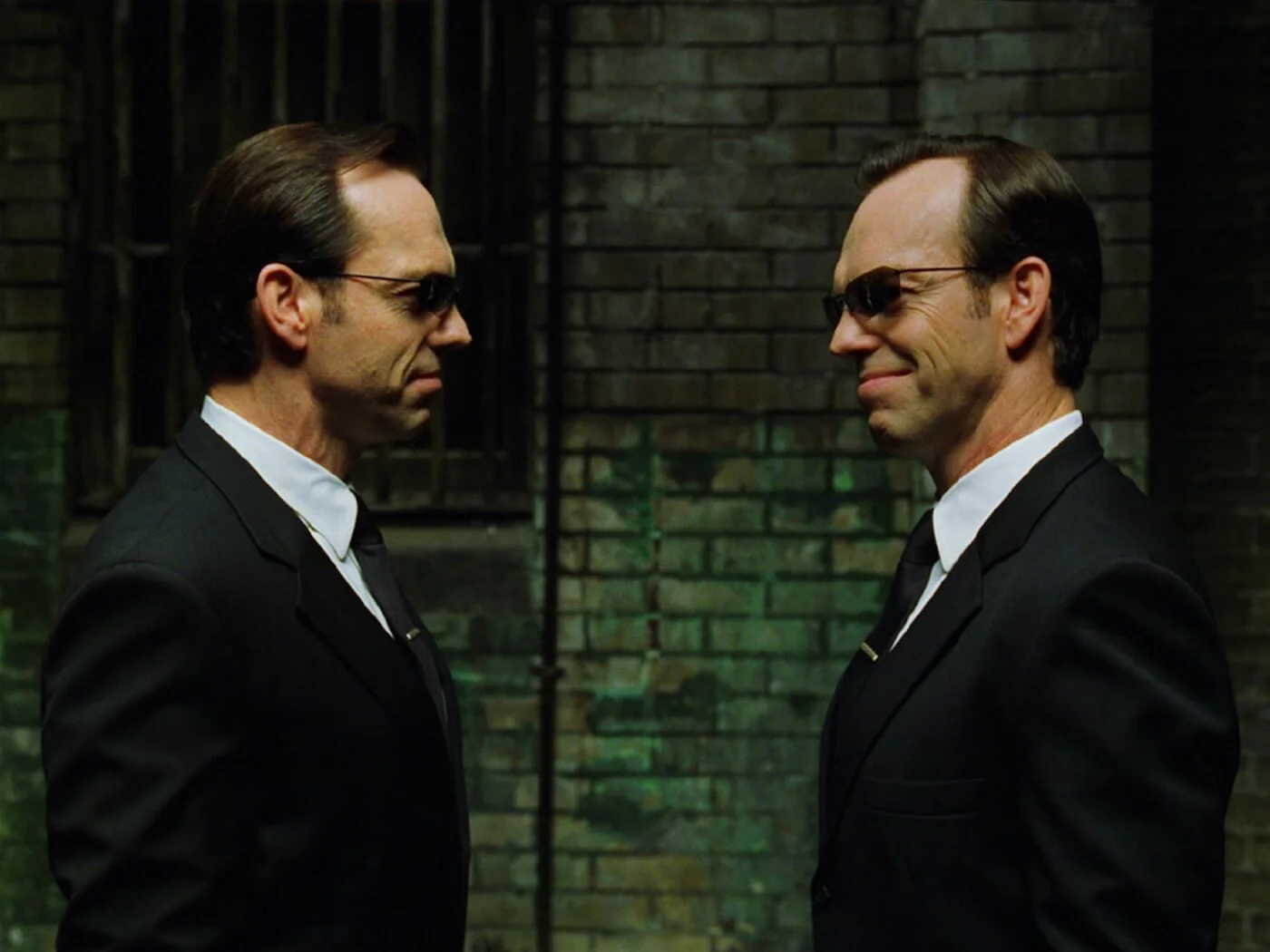
Type of shot example: 2-Shot in The Matrix Reloaded
Two shots are often really useful for allowing performances to play out in a single take, which can be especially useful for comedy.
Camera Shot Framing In movies
Three Shot or 3-Shot
A three-shot features three characters in the frame:
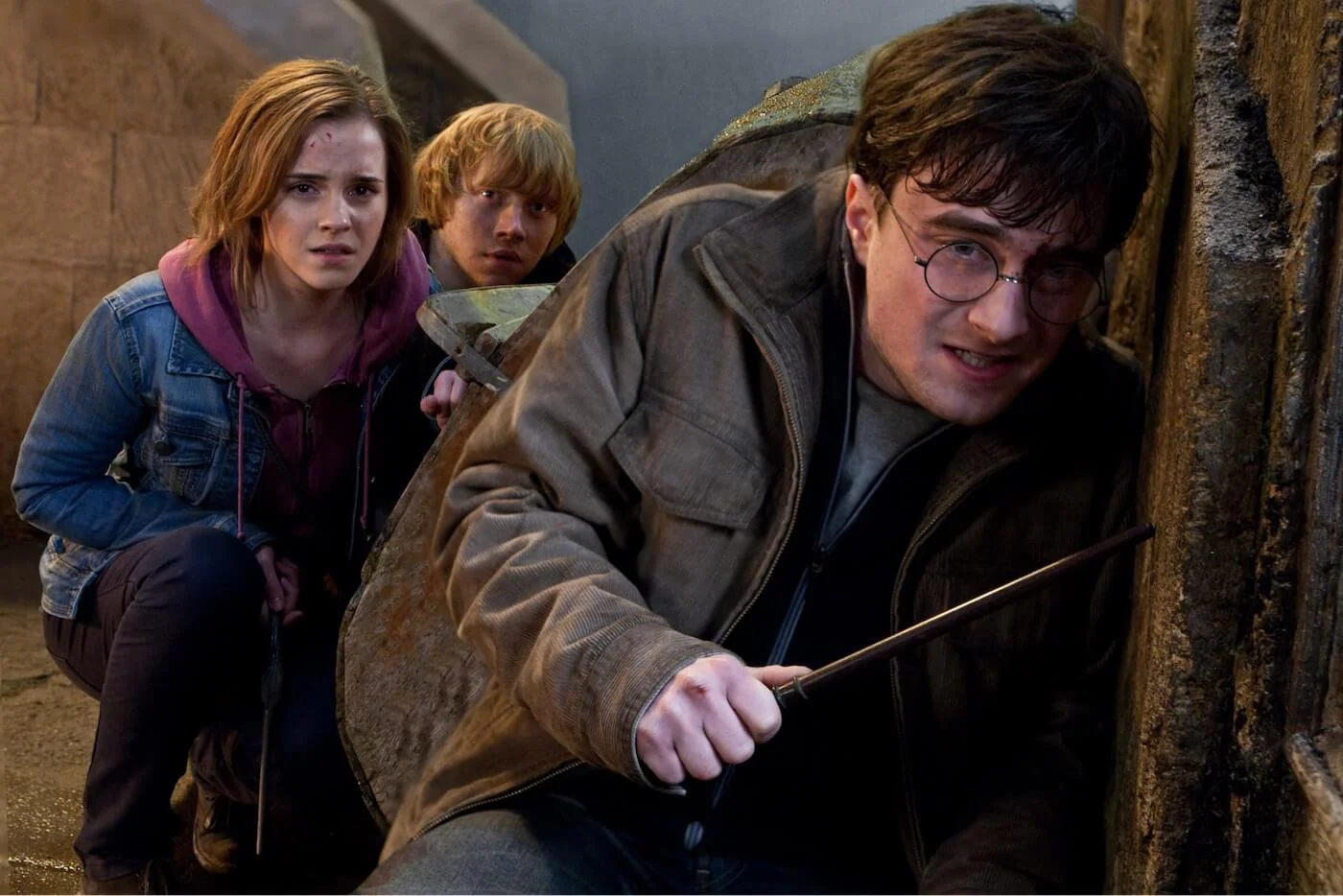
Type of shot example: 3-Shot in Harry Potter and the Deathly Hallows – Part 1
Three shots are really important in adventure films, or really any film that has a group of characters, because it is an enormous time drain to shoot 3 singles just to show every character, not to mention jarring.
Related Posts
Types of camera shot framing
Over-The-Shoulder Shot (OTS)
Another element of camera shots to consider is the perspective of the shot. An over-the-shoulder shot shows your subject from behind the shoulder of another character. Because it emulates perspective, it’s common in conversation scenes.
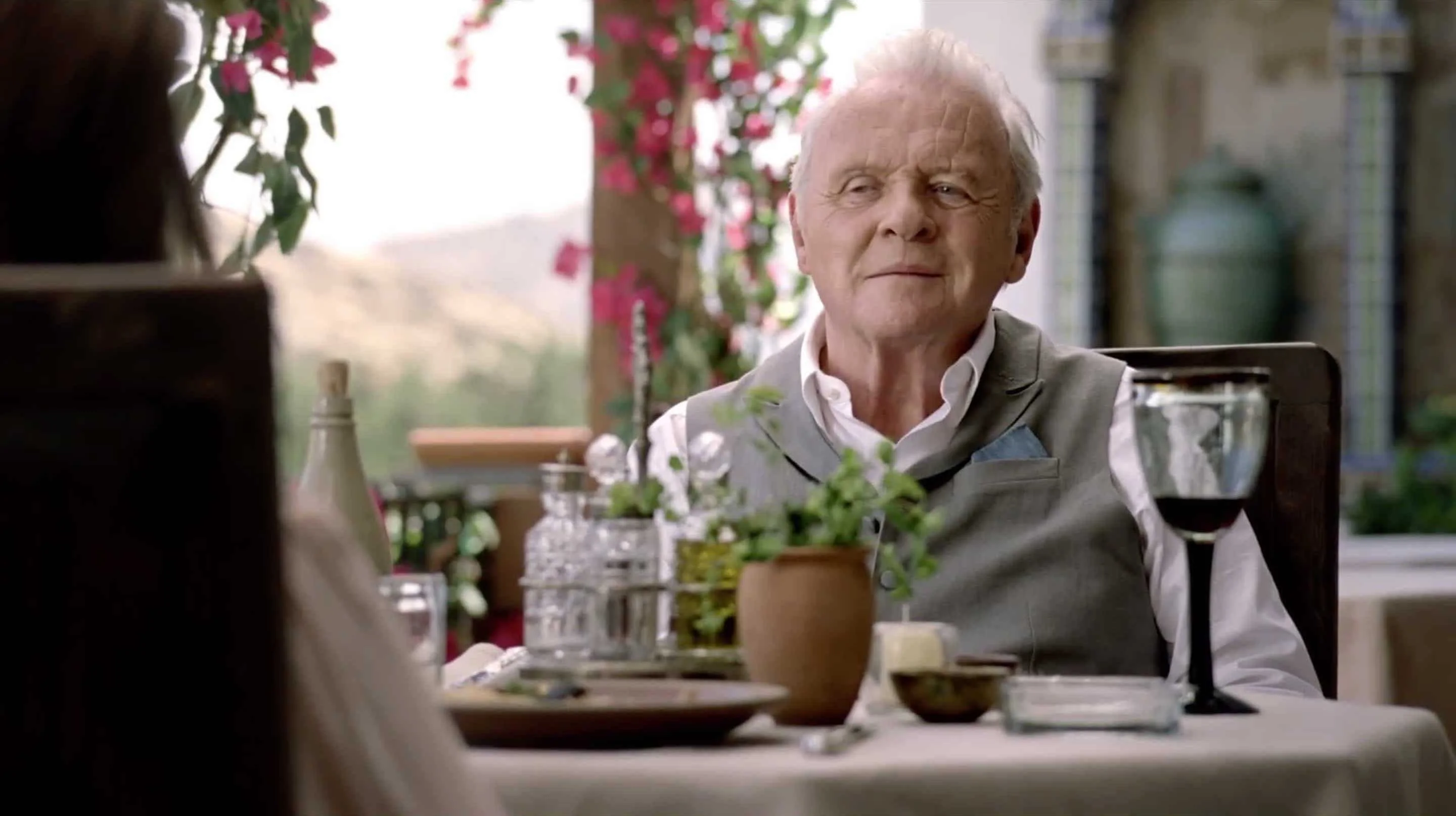
(OTS) Over-The-Shoulder Shot Example in Westworld
Over-the-shoulder shots can help to provide orientation, and connect the characters on an emotional level. Here's our breakdown of the Westworld scene and how OTS shots work so effortlessly.
The Over The Shoulder Shot Example in Film • Subscribe on YouTube
Types of Shots By Framing
Over-The-Hip Shot (OTH)
An over-the-hip shot is similar to over-the-shoulder in that the camera is placed with a character's hip in the foreground, and the focus subject in the plane of acceptable focus.
Here's an example of an over-the-hip shot from one of the best Steven Spielberg movies Minority Report:
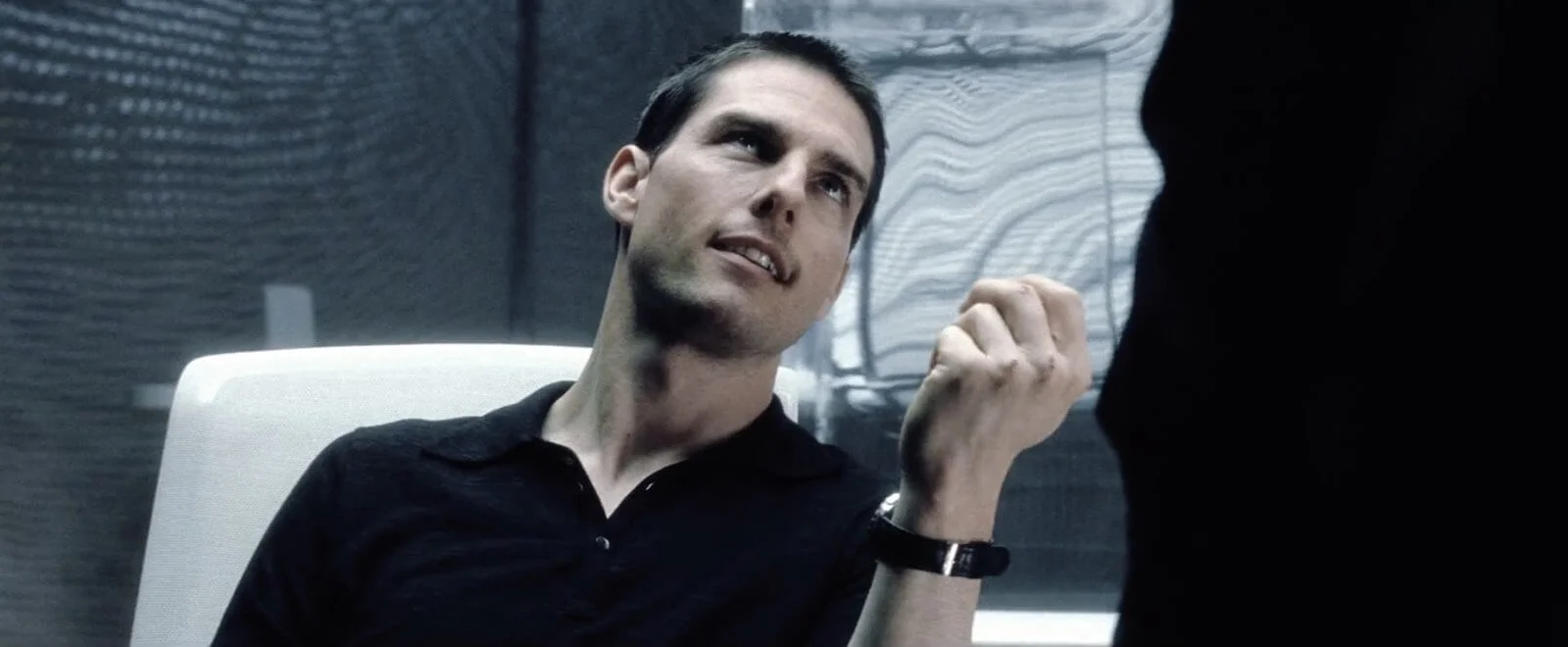
Over-The-Hip Shot Example in Film: Minority Report
You'll gain a similar effect from an over-the-hip shot as you would an OTS, but if you have one character standing, and the other sitting, kneeling, or any other configuration that places the subjects on "uneven terrain" it will often suggest a power imbalance. This is the benefit of blocking and staging your actors and camera.
Types of Camera Framing
Point of View Shot (POV)
Now let's talk about choosing camera shots that show the point-of-view (or POV) of one of your characters.
A POV shot is a camera shot that shows the viewer exactly what that character sees. This transports the audience into that character and there is no more literal example of this than Being John Malkovich:
Point of View Shot Example in Being John Malkovich
POV shots can also invoke horror, as seen in one of the best horror movies Halloween but that's just the beginning. In this video, watch how many ways in various genres the point of view shot can be used.
Type of shot example: POV shot • Subscribe on YouTube
A point of view shot (POV) is generally sandwiched between two other shots, a technique called shot-reverse shot:
- A camera shot of a character looking at something
- Cut to your (POV) point of view camera shot
- A camera shot showing the character's reaction
A point of view shot shows us exactly what the character sees, and we get to understand what's generating the character's reaction.
3
Camera Focus
THE VIEWER'S POINT OF ATTENTION
Types of Camera Shot Focus
Cinema and television give the director an uncanny ability to control the audience's vision. You can shift and change points of view as people learn new information, move locations, or switch perspectives.
Depth of field DEFINITION
What is depth of field?
Depth of field (DOF) is the term used to describe the size of the area in your image where objects appear acceptably sharp. The area in question is known as the field, and the size (in z-space) of that area is the depth of that field.
The center most point of the field is known as the point of focus. The imaginary two dimensional plane that extends from that point is known as the plane of focus. And any part of your image that falls directly on this plane is officially in focus.
There are various types of camera focus to choose from, each with their own unique storytelling properties. Here's a video breakdown of each type with examples of how they enhance the visual storytelling.
Ultimate Guide to Camera Focus • Subscribe on YouTube
Here is a shot list with all the types of camera shot focus:
Types of Camera Focus in Film • Shotlisted in StudioBinder
Plan focus changes on your shot list
Filmmakers often want to direct attention around different parts of the scene. To do this, you need to decide on the angle of shot, camera movements, and any special equipment needed to pull it off.
Camera Shots Focus Types
Rack Focus vs. Focus Pull
Manipulating focus is another way of communicating with your camera shots. The vast majority of films you watch will keep their subjects in focus 95% of the time, with the odd slip up here and there.
The first assistant cameraman (or “First AC”) will pull focus to make sure that the subject stays within the acceptable focus range while they move to various depths within the frame.
A rack focus is an emphasized focus pull, where the acceptable focus range is intentionally shifted from one subject to another. This is an aggressive use of focus as a story telling device:
Film Shot Types: The art of the rack focus • Subscribe on YouTube
Focus Pull = Passive vs. Rack Focus = Aggressive
Now, this doesn't mean that pulling focus is easy, and in fact it is much harder to maintain focus by making micro adjustments vs setting up a rack focus on a set mark. It's just a matter of the viewer taking notice.
Types of Camera Shot Focus
Shallow Focus Shot (Shallow DOF)
In shallow focus shots, your subject is in crisp focus while the foreground and background scenery is out of focus. This limits your depth of field to create emphasis on your subject.

Film Shot Types: Two-shot + Shallow Depth of Field Example in The Social Network
Here's another shallow focus shot example:
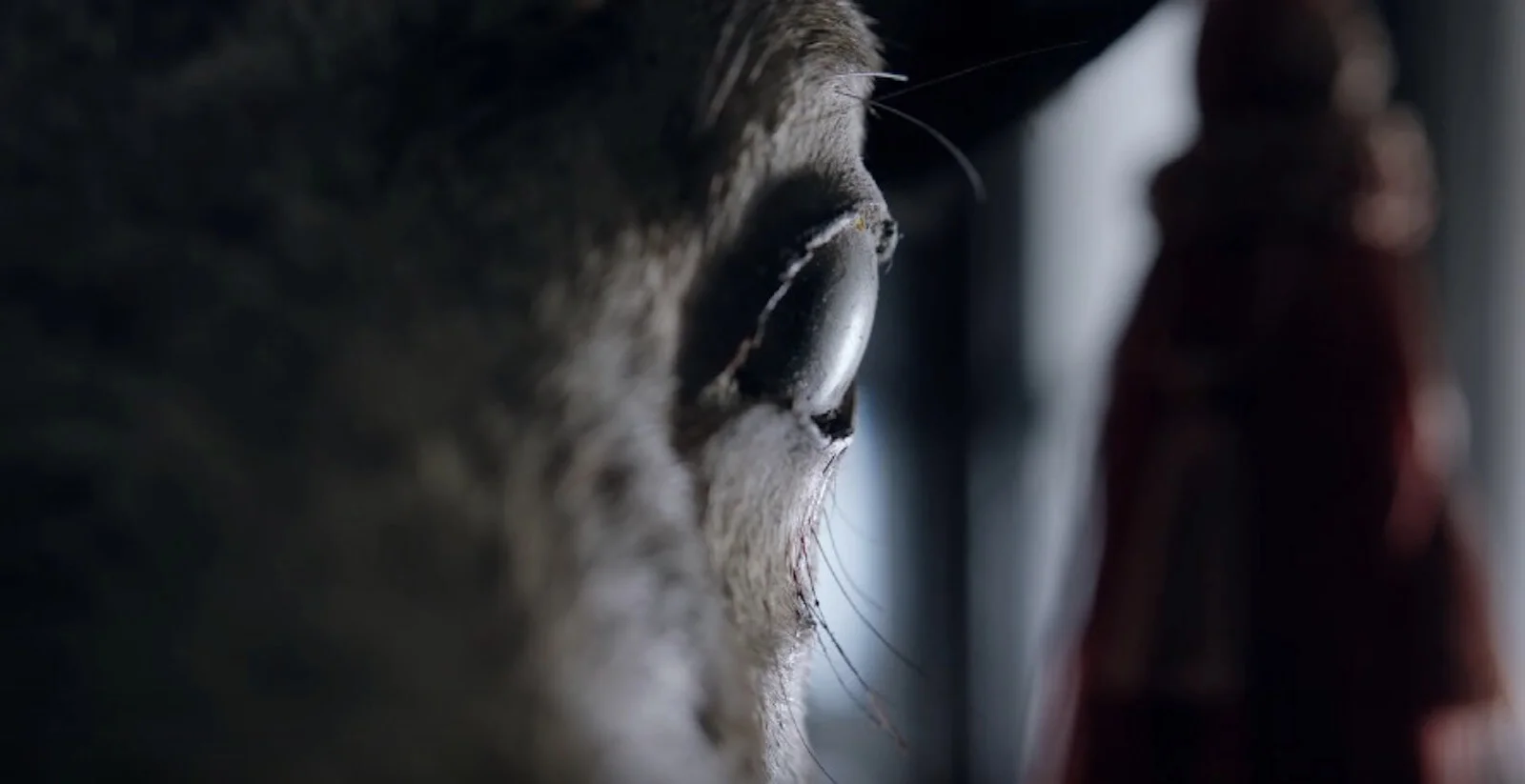
Film Shot Types: Shallow Focus Shot Example in The Night Of
Types of Camera Shot Focus
Deep Focus Shot
In a deep focus shot, everything in your frame is in focus. This is when you need your audience to feel the scenery or particular scene elements.
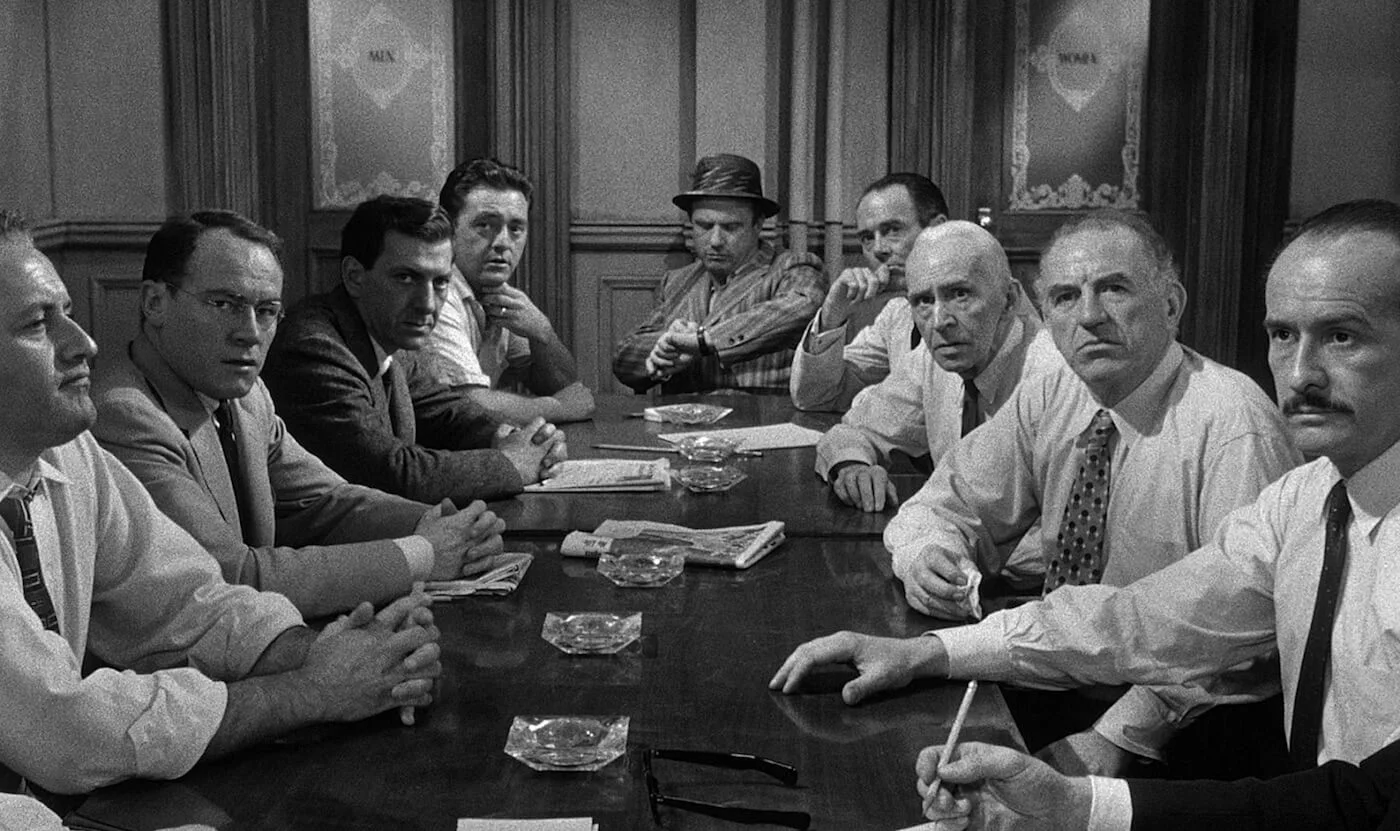
Film Shot Types: Deep Focus Shot Example in 12 Angry Men
Here's another deep focus shot example:
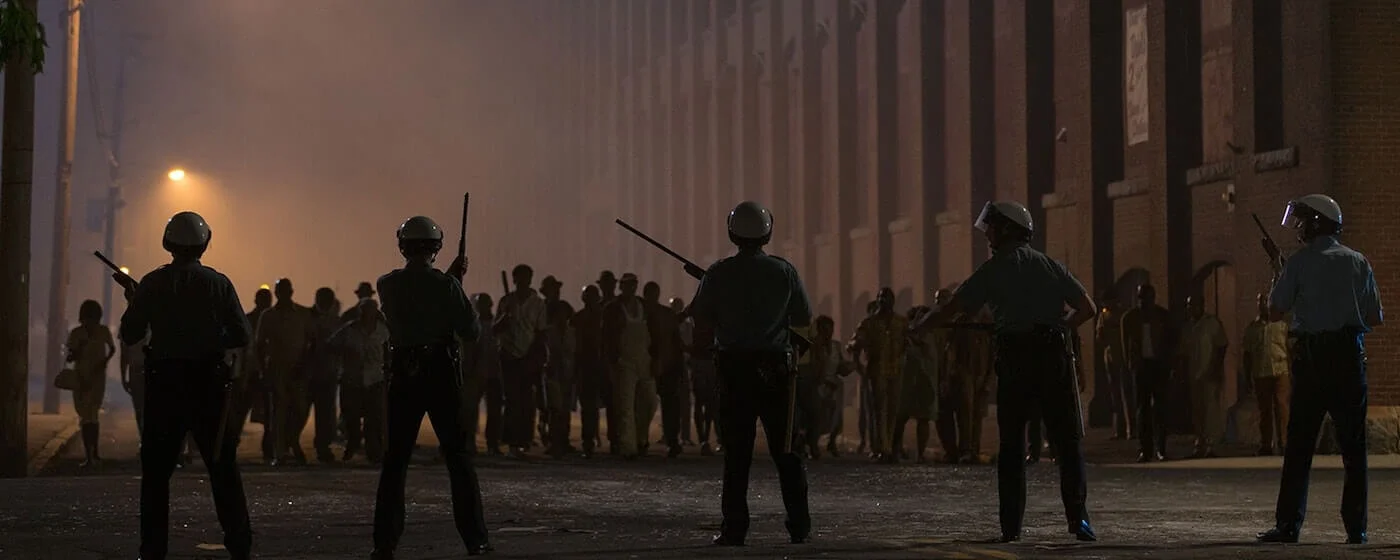
Film Shot Types: Deep focus staging shows two forces collide in Detroit
Types of camera shots By Focus
Tilt-Shift Shot
A tilt-shift lens rotates perspective within the lens and emulates selective focus. It can make parts of your image appear in sharp focus while others are out of focus.
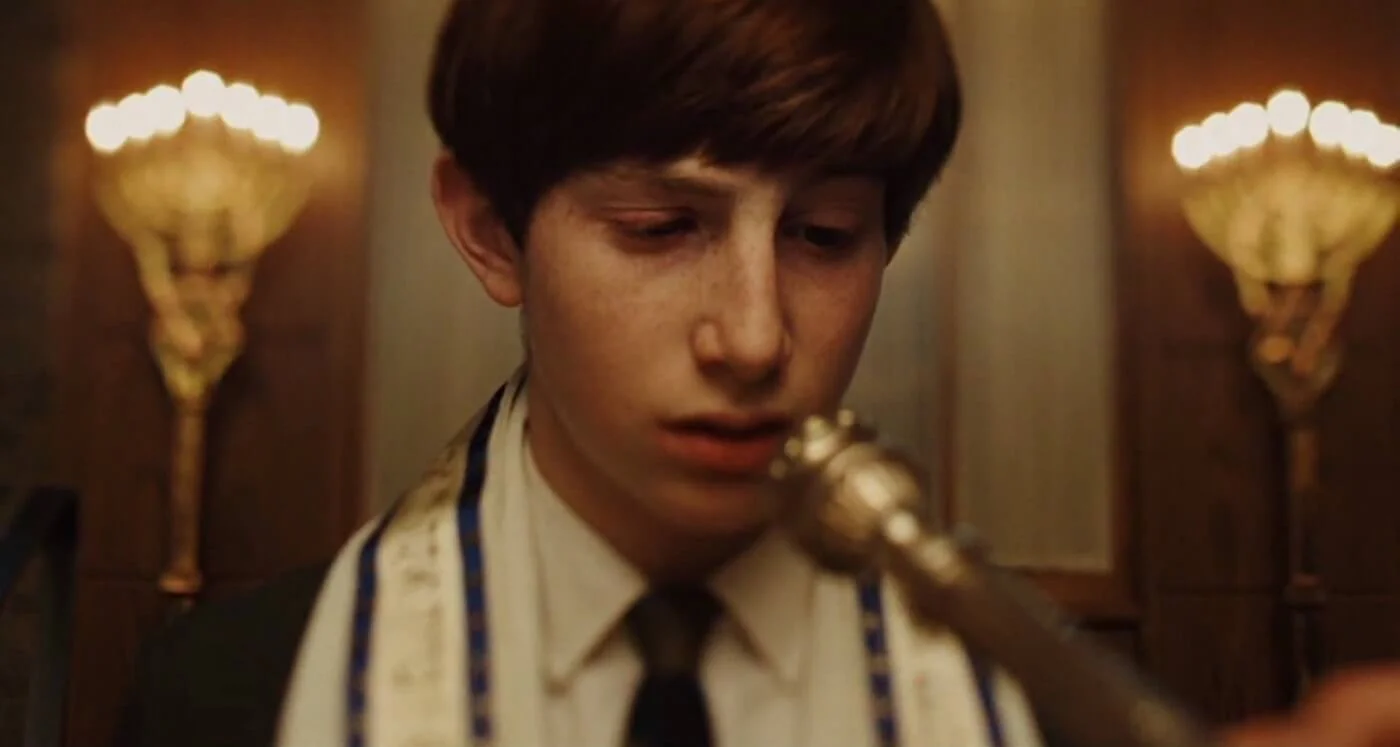
Film Shots Example: A tilt-shift lens captures a trippy bar mitzvah in A Serious Man
Here's another tilt-shift shot example from The Assassination of Jesse James by the Coward Robert Ford:
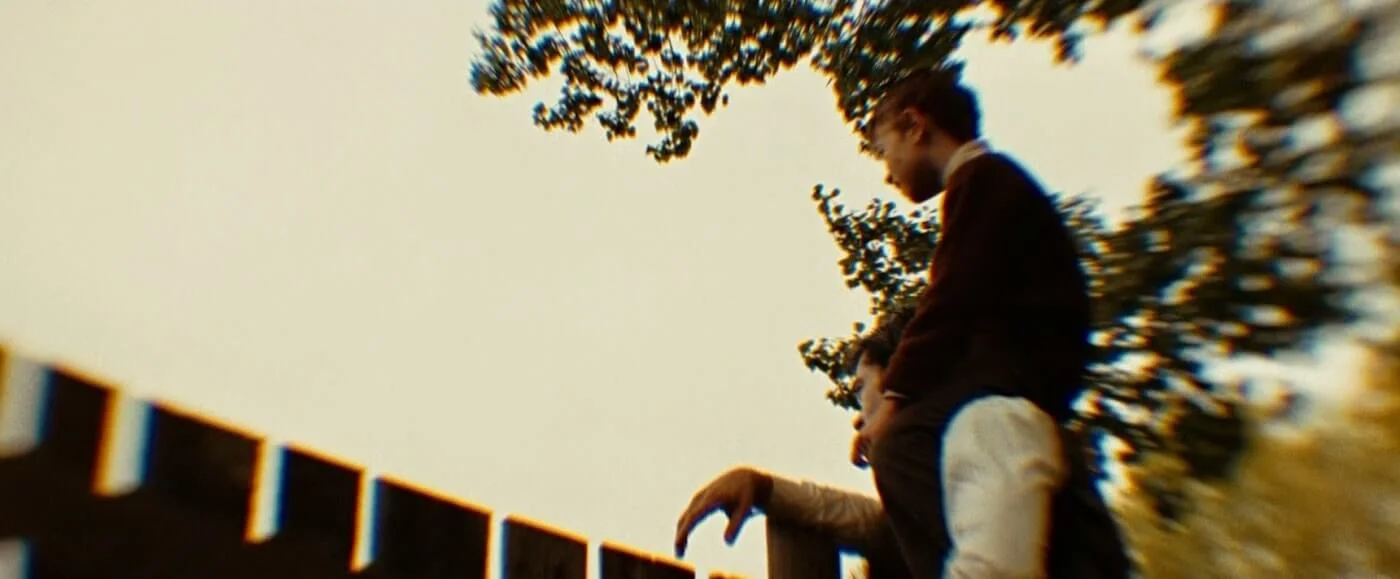
Film Shots Example: A tilt-shift lens creates dreamy distortion
Types of Camera Focus
Soft focus
Whereas deep focus keeps everything in focus, and shallow focus keeps something in focus, soft focus shots keep nothing in 100% sharp focus. This is caused by either a flaw in the lens itself or through special filters.
That Soft Focus Glow in Brian De Palma's Carrie
Soft focus is perfect when filming a dream or memory — the glow around everything is both wistful and slightly unreal.
Two Planes of Camera Focus
Split Diopter
A split diopter is an additional lens element that allows for two simultaneous focal lengths. In other words, you can achieve shallow focus in the foreground AND in the background, while the middle ground remains out of focus.
Split Diopter Shot in Jaws
This is a highly stylized shot and tends to draw attention to itself because it is "unnatural." The human eye can see in deep or shallow focus but not both at the same time, which is why this type of camera shot should used with caution.
4
Camera Angles
ADJUSTING CAMERA HEIGHT FOR IMPACT
Types of Camera Shot Angles
It's not enough to just understand shot size. Camera angles, and degree of those angles, can totally change the meaning of a film shot.
Camera Shot Angle DEFINITION
What is camera shot angle?
The camera shot angle is used to specify the location where the camera is placed to take a shot. The position of the camera in relation to the subjects can affect the way the viewer perceives the scene. A scene may be shot simultaneously from multiple camera angles to amplify the cinematic effect and the emotions.
There are many camera angles at a filmmaker's disposal and can even be combined for additional effect. Here's a rundown of every camera angle, how they work, and whey they might work best in your next shot list.
Ultimate Guide to Camera Angles • Subscribe on YouTube
For a downloadable "cheatsheet," here is a shot list with the different types of camera shot angles:
Types of Camera Shot Angles Examples • Shot Listed in StudioBinder
In this section we'll cover all the different types of camera angles in film and provide you with plenty of camera angle examples:
TYPES OF CAmera Angles
Eye Level Shot
First, consider the most common height: the eye level shot. When your subject is at eye-level they’re in a neutral perspective (not superior or inferior). This mimics how we see people in real life -- our eye line connecting with theirs.
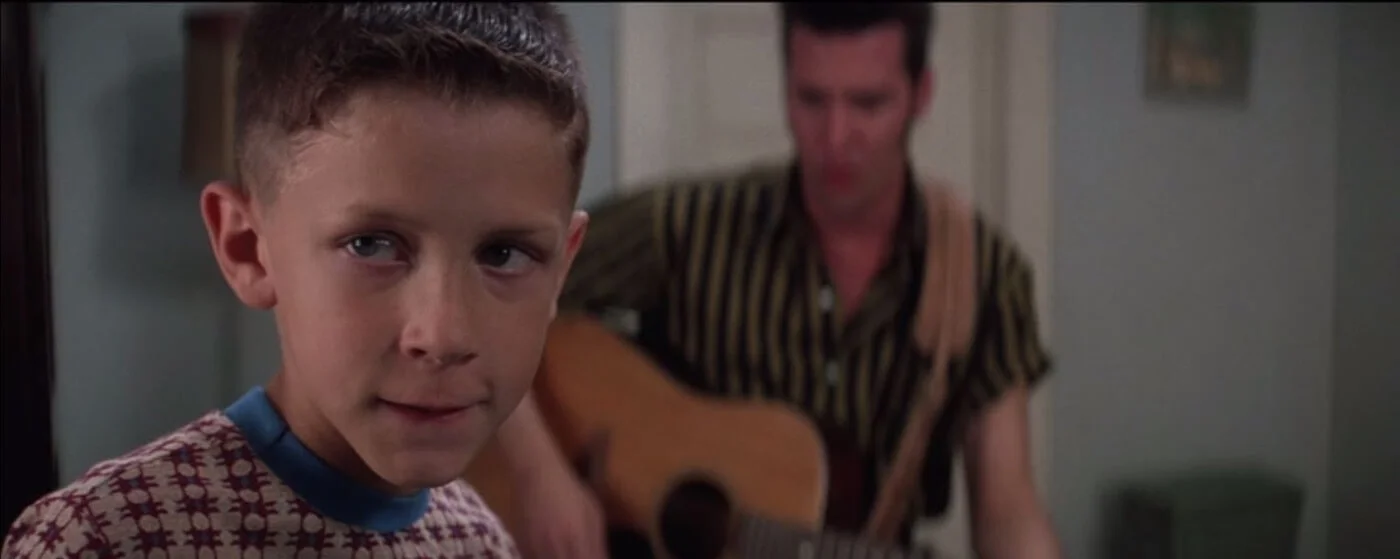
Types of Angles: Eye Level Shot Example in Forrest Gump
Here's another eye level shot example from one of the best Tim Burton movies Alice in Wonderland:
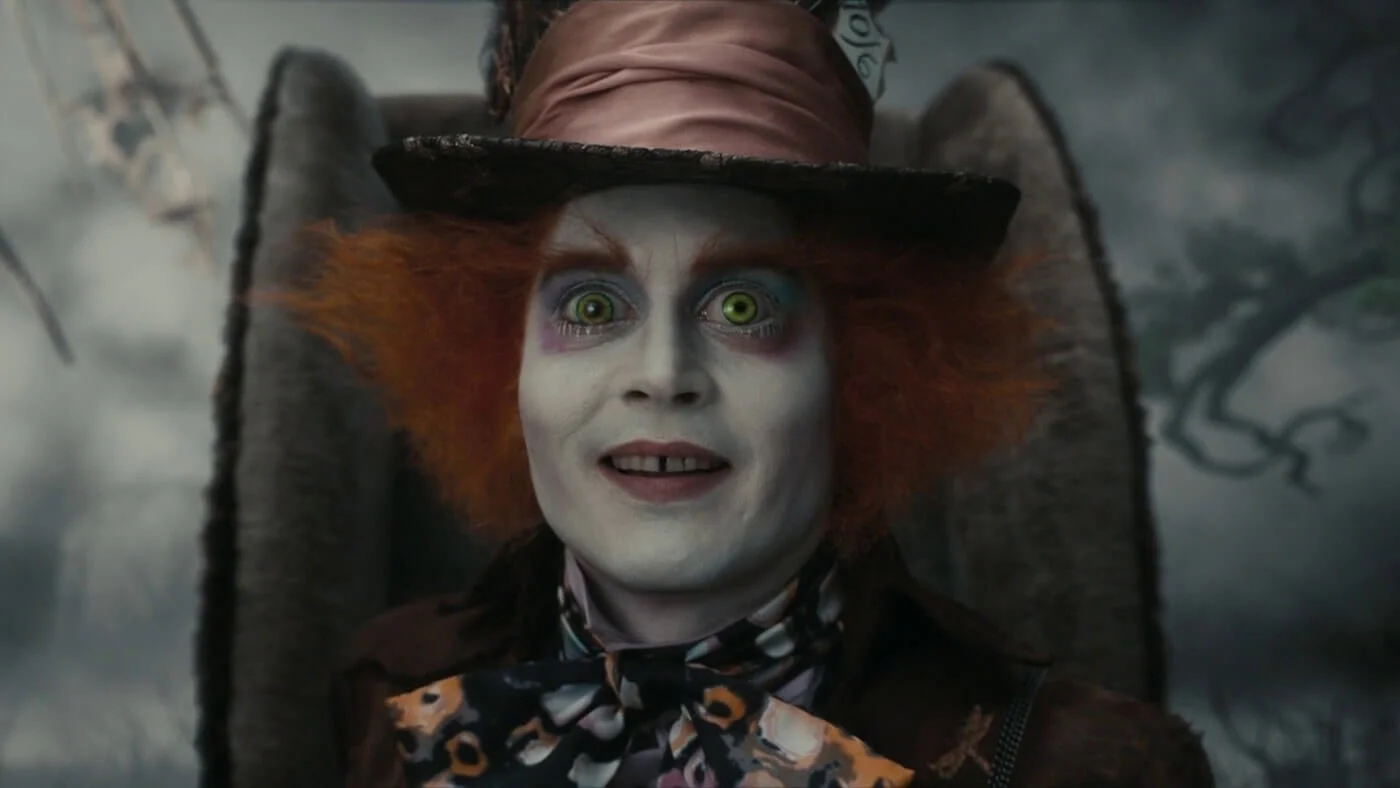
Types of Camera Shot Angles: Eye Level Shot Example in Alice in Wonderland
TYPES OF CAmera Angles
Low Angle Shot
A low angle shot frames the subject from a low camera height looking up at them. These camera shots most often emphasize power dynamics between characters.
Low Angle Camera Shot Examples • Subscribe on YouTube
A superior character with the upper hand is often framed from down low. This makes an inferior feel like they are looking up to them.
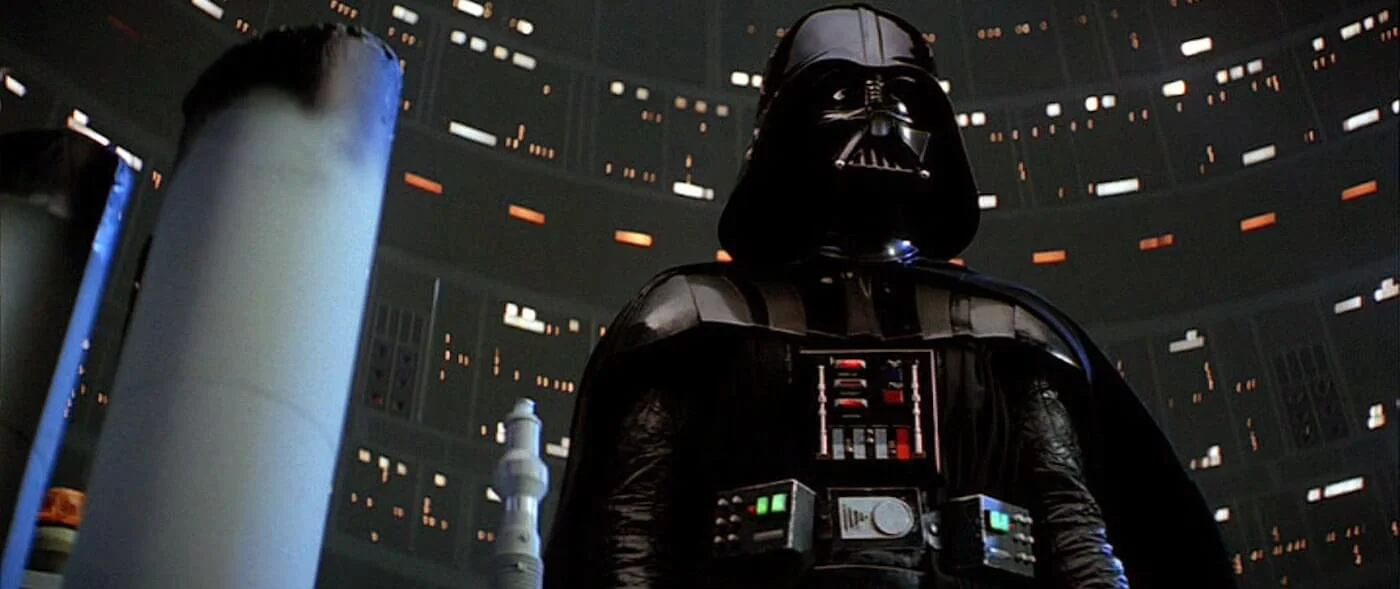
Types of Angles: Low Angle Shot Example in The Empire Strikes Back
TYPES OF ANGLES: High Angle Shot Example
High Angle Shot
In a high angle shot, the camera points down at your subject. It usually creates a feeling of inferiority, or “looking down” on your subject.
But, as the video below shows, there are creative expressions of this type of angle that can vary depending its context.
Types of Camera Angles: High Angle Shot Examples • Subscribe on YouTube
Here's an example of a high angle shot from one of the best romantic movies The Princess Bride:
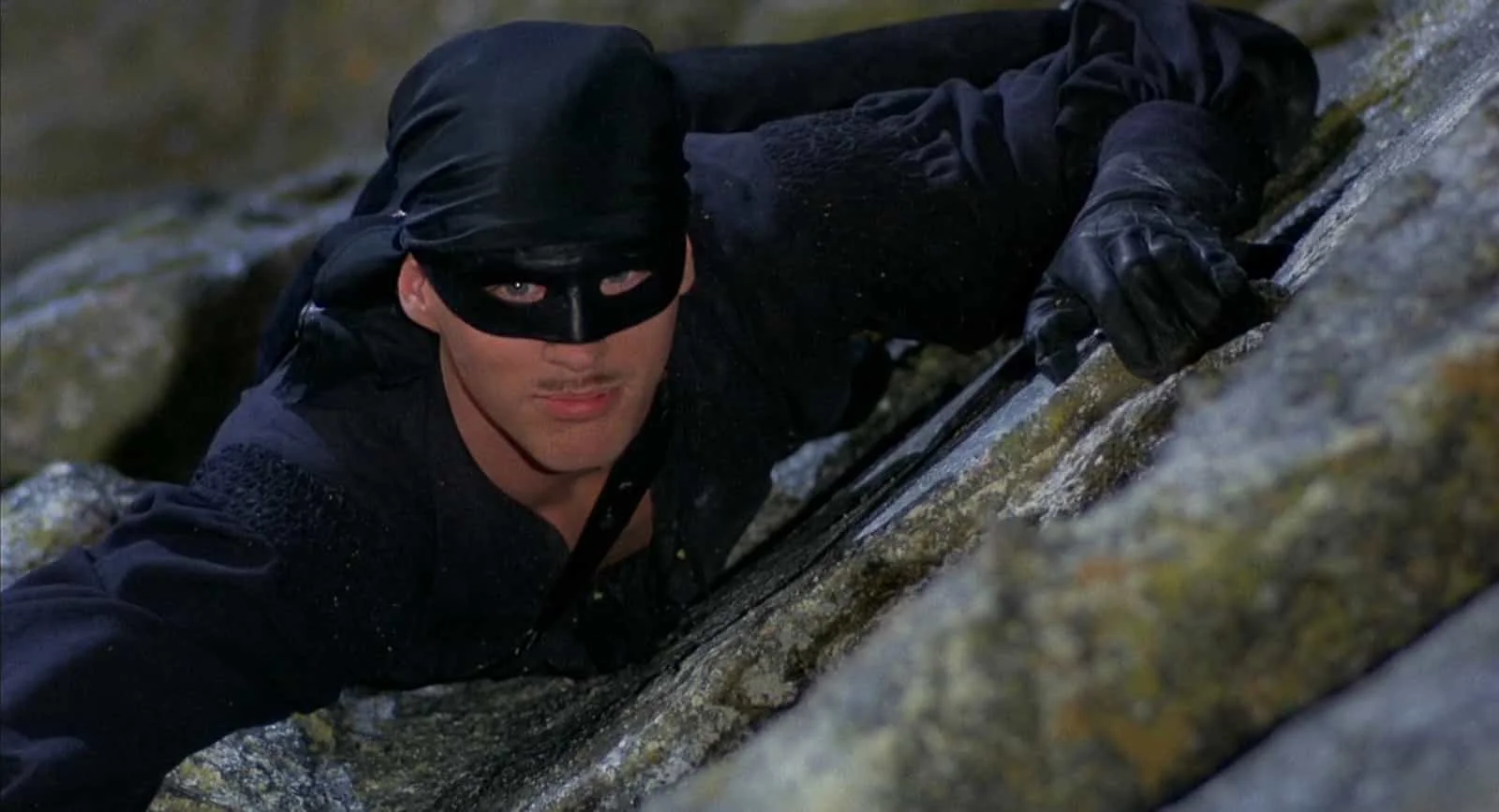
Film Shots Examples: High Angle Shot in The Princess Bride
Types of Camera Shot Angles
Hip Level Shot
A hip level shot is when your camera is roughly waist-high.
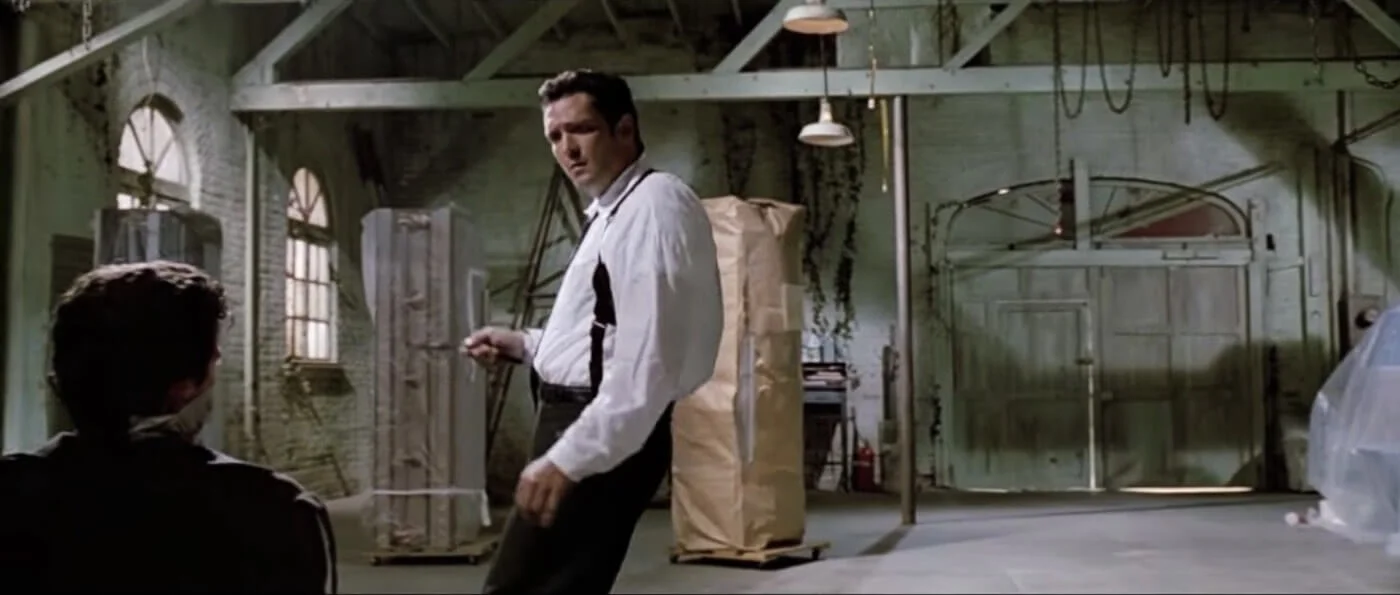
Types of Camera Angles: Hip Level Shot Example in Reservoir Dogs
Here's another hip level shot example from one of the best romantic comedies Punch-Drunk Love:
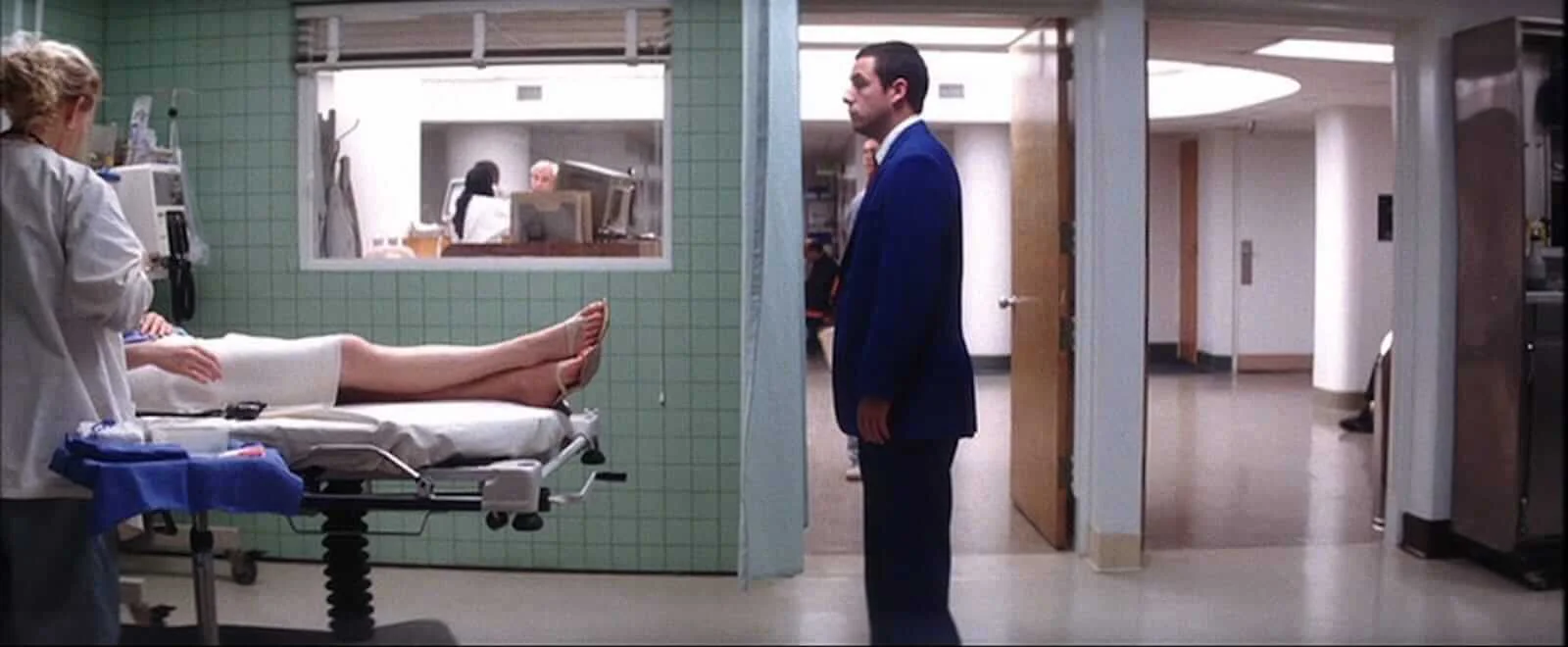
Types of Angles: Hip Level Shot Example in Punch-Drunk Love
TYPES OF CAMERA ANGLES
Knee Level Shot
This is when your camera height is about as low as your subject’s knees. They can emphasize a character’s superiority, if paired with a low angle.
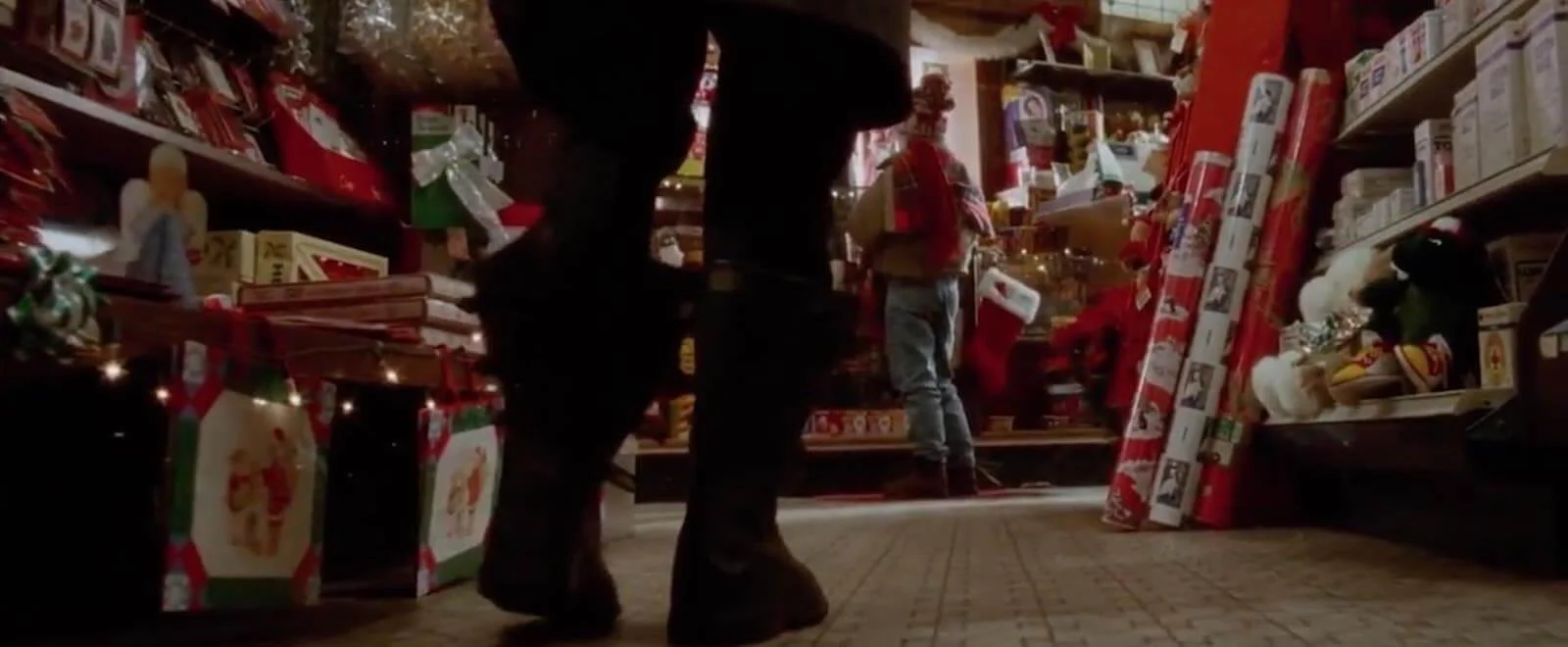
Shot Types: Knee Level Shot in Home Alone
Here's another knee level shot example:
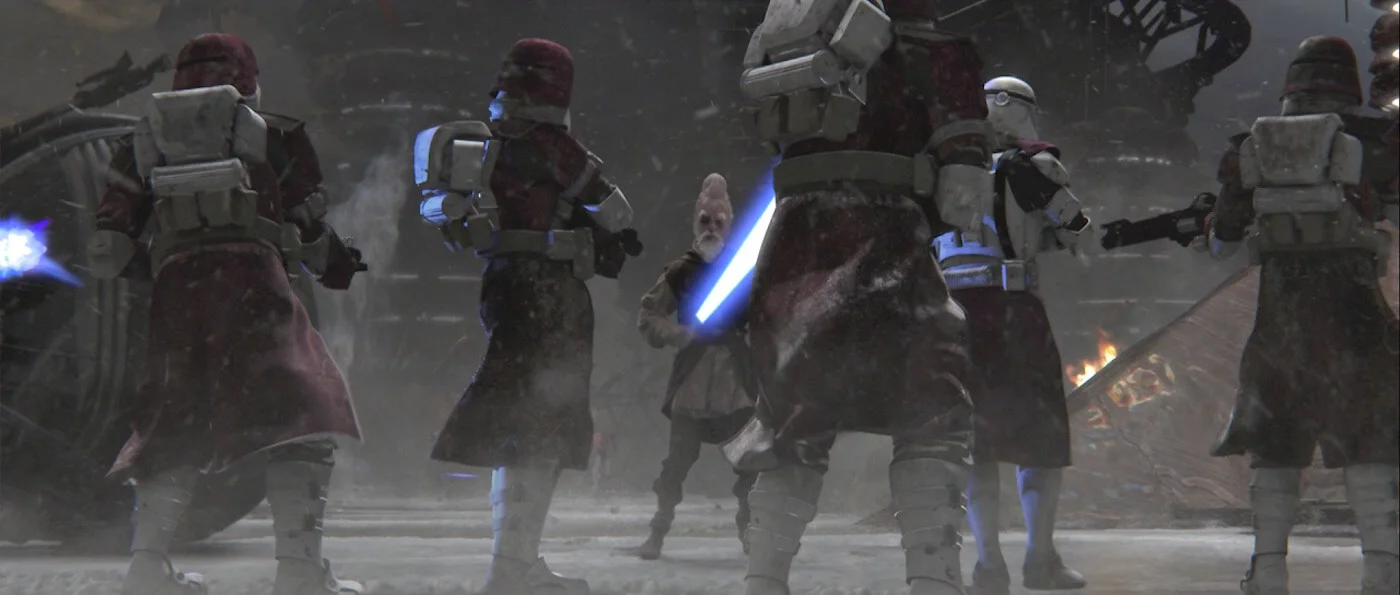
Types of Camera Shot Angles: Knee Level Shot Example in Revenge of the Sith
TYPES OF SHOT ANGLES in movies
Ground Level Shot
A ground level shot is when your camera’s height is on ground level with your subject. Needless to say, this shot captures what’s going on the ground your subject stands on.
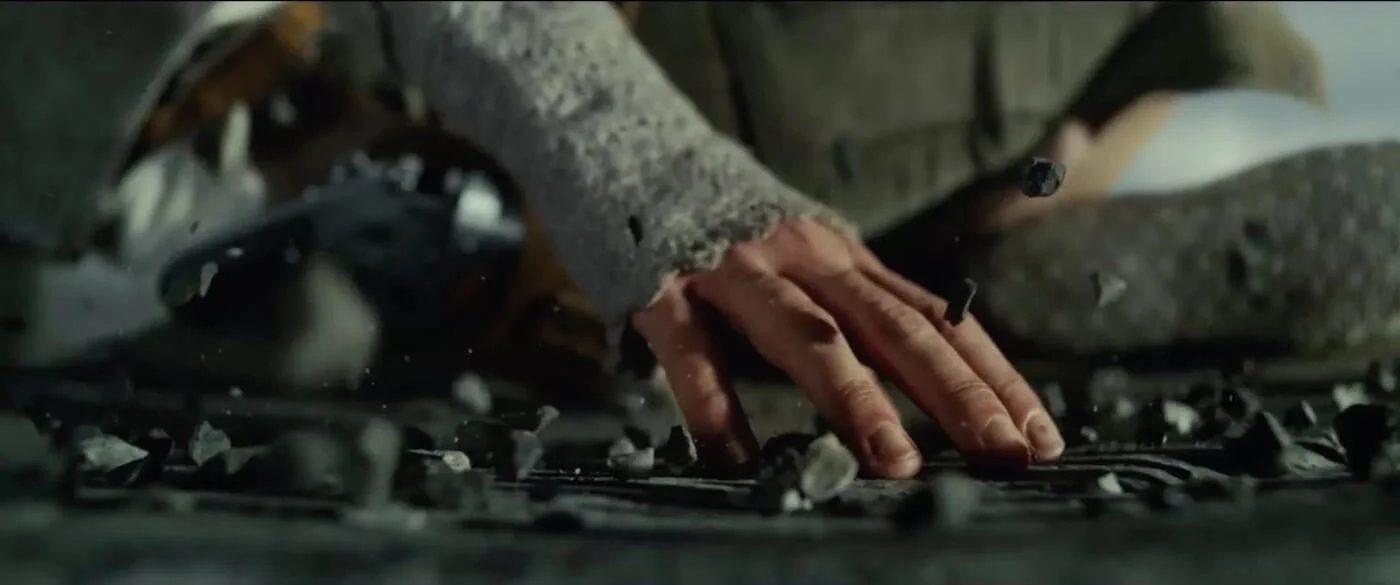
Types of Angles: Ground Level Shot Example in Star Wars VIII: The Last Jedi
Here's another ground level shot example:
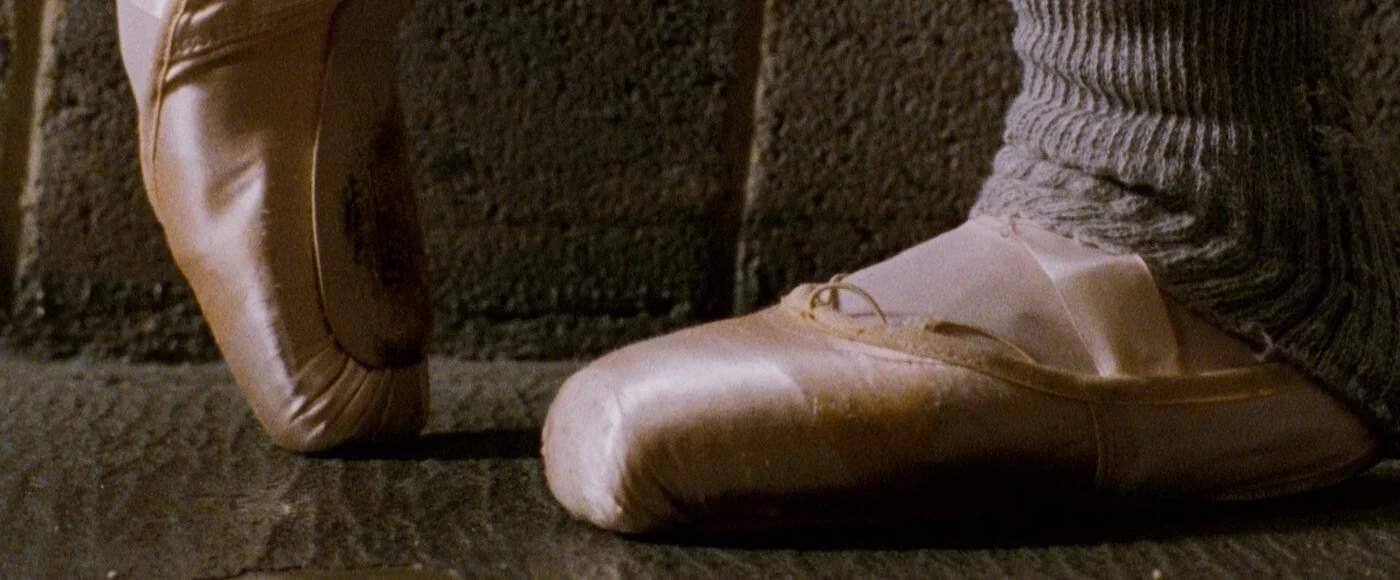
Shot Types: Ground Level Shot Example in Black Swan
Here's another ground level shot example from one of many Stanley Kubrick's marvelous movies, Full Metal Jacket:
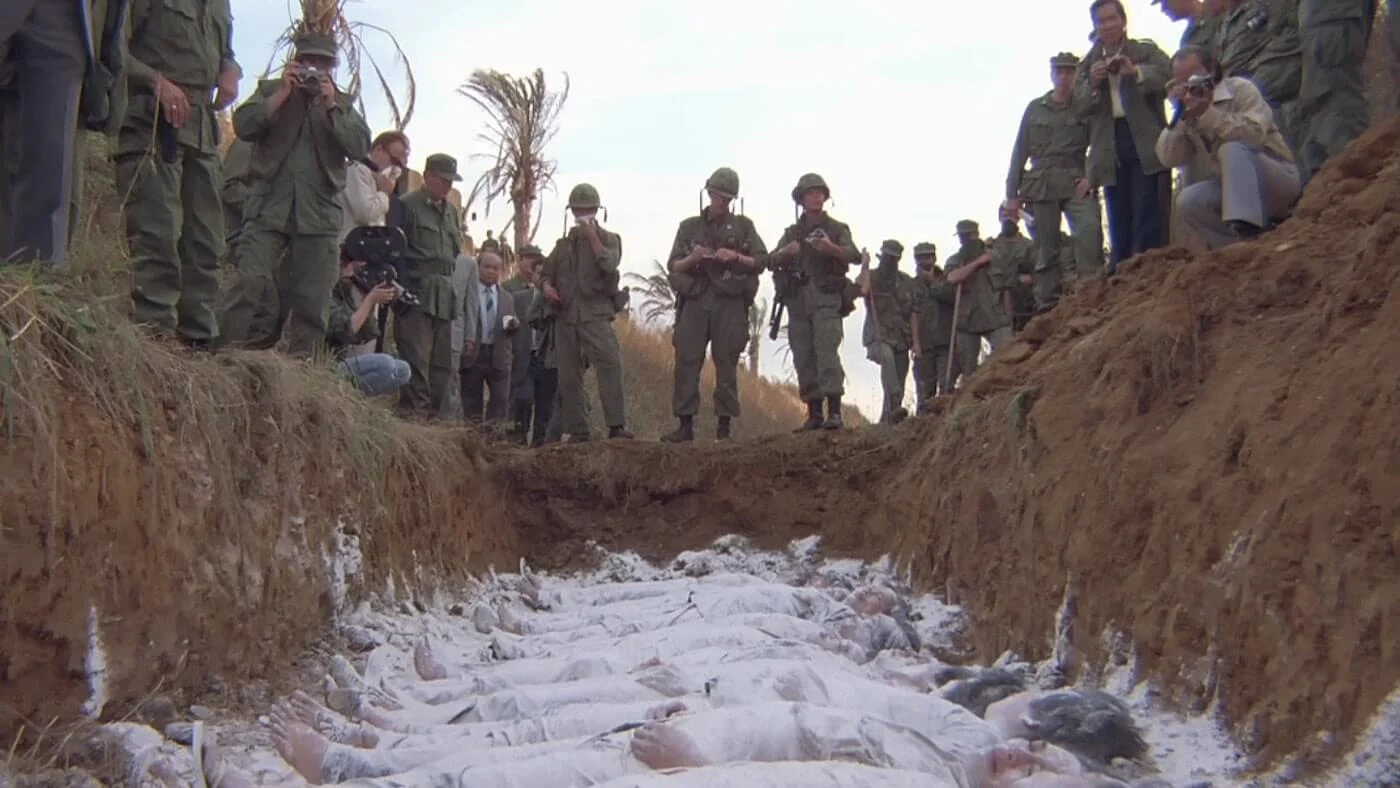
Types of Angles: Ground Level Shot Example in Full Metal Jacket
TYPES OF CAMERA ANGLES in film
Shoulder Level Shot
This is when your camera is roughly as high as your subject’s shoulders. Shoulder level shots are actually much more standard than an eye level shot, which can make your actor seem shorter than reality:
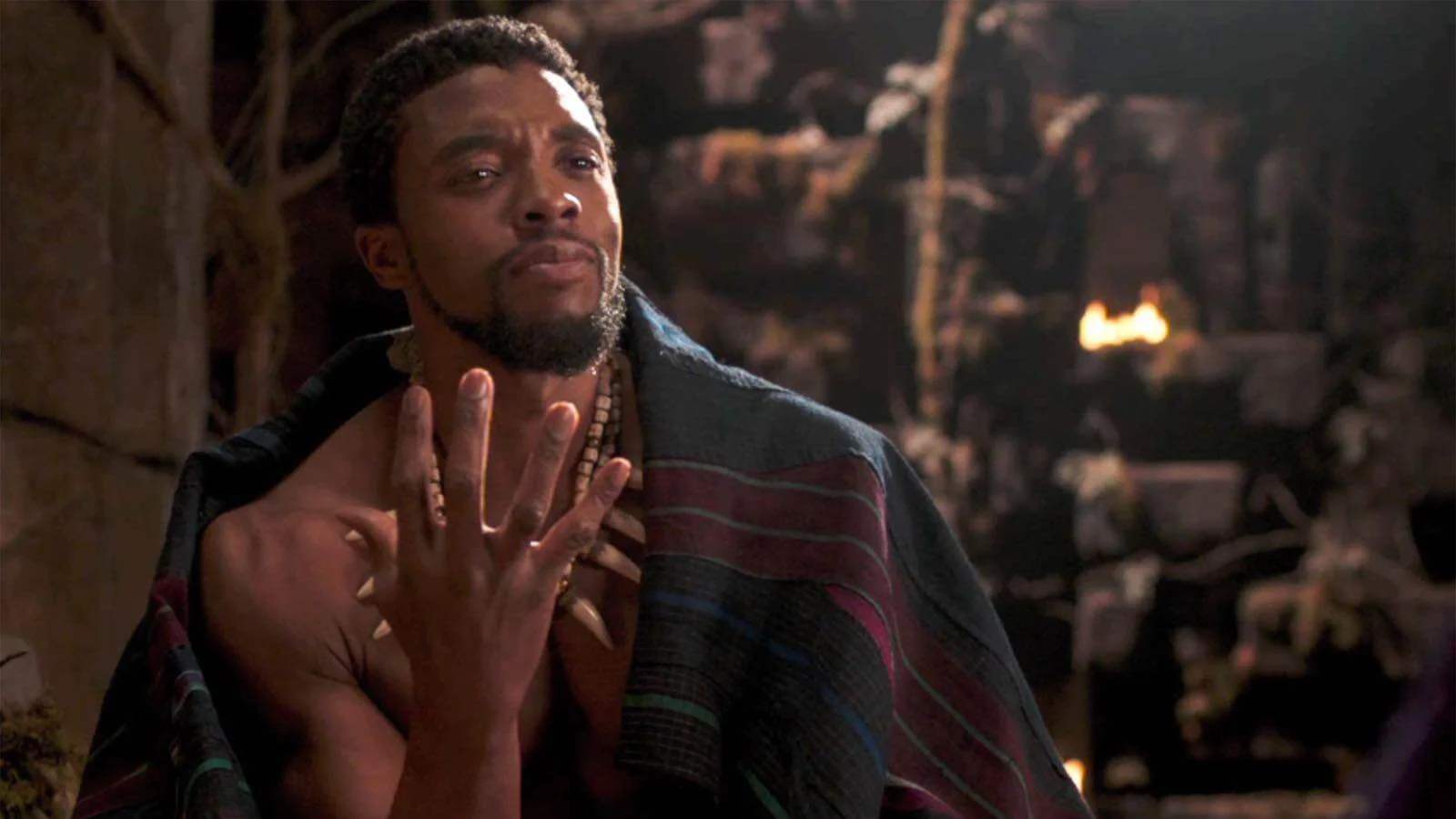
Types of Camera Shot Angles: Shoulder Level Shot in Black Panther
A shoulder level shot can maximize the feeling of superiority when paired with a low angle. Here's another shoulder level shot example:
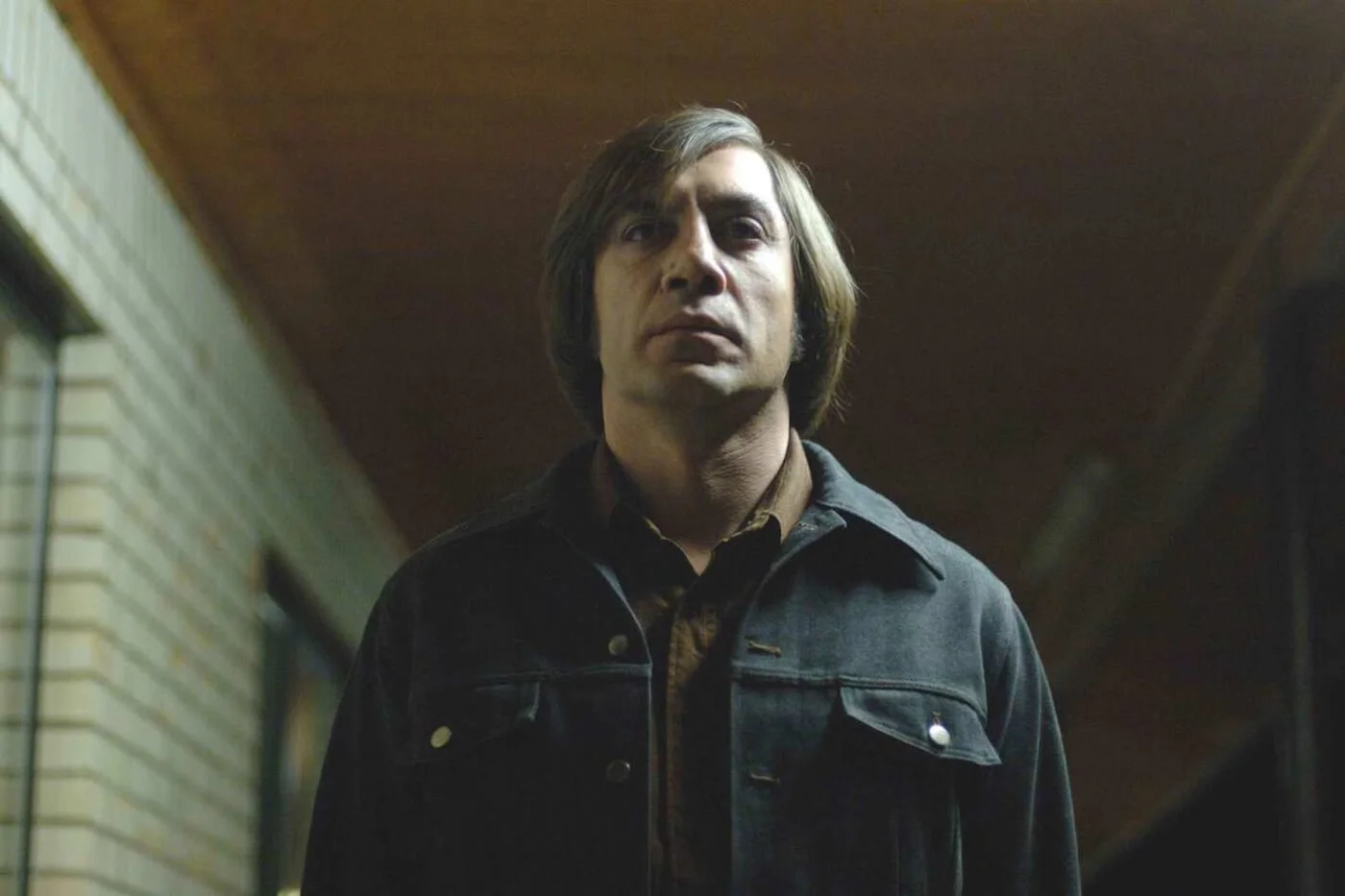
Types of Camera Angles: Shoulder Level Shot Example in No Country For Old Men
types of shots in film
Dutch Angle or Dutch Tilt Shot
For a dutch angle (dutch tilt), the camera is slanted to one side. With the horizon lines tilted in this way, you can create a sense of disorientation. This video breaks down a key moment in Mission: Impossible when Ethan first realizes that he's being set up.
Shot Types: Dutch Angle Example • Subscribe on YouTube
CAMERA SHOTS ANGLE in film
Bird’s Eye View Shot or Overhead Shot
An overhead shot is from way up high, looking down on your subject and a good amount of the scenery surrounding him or her. This can create a great sense of scale and movement.
A handy compilation of bird’s eye camera shots.
Here's an overhead shot example:
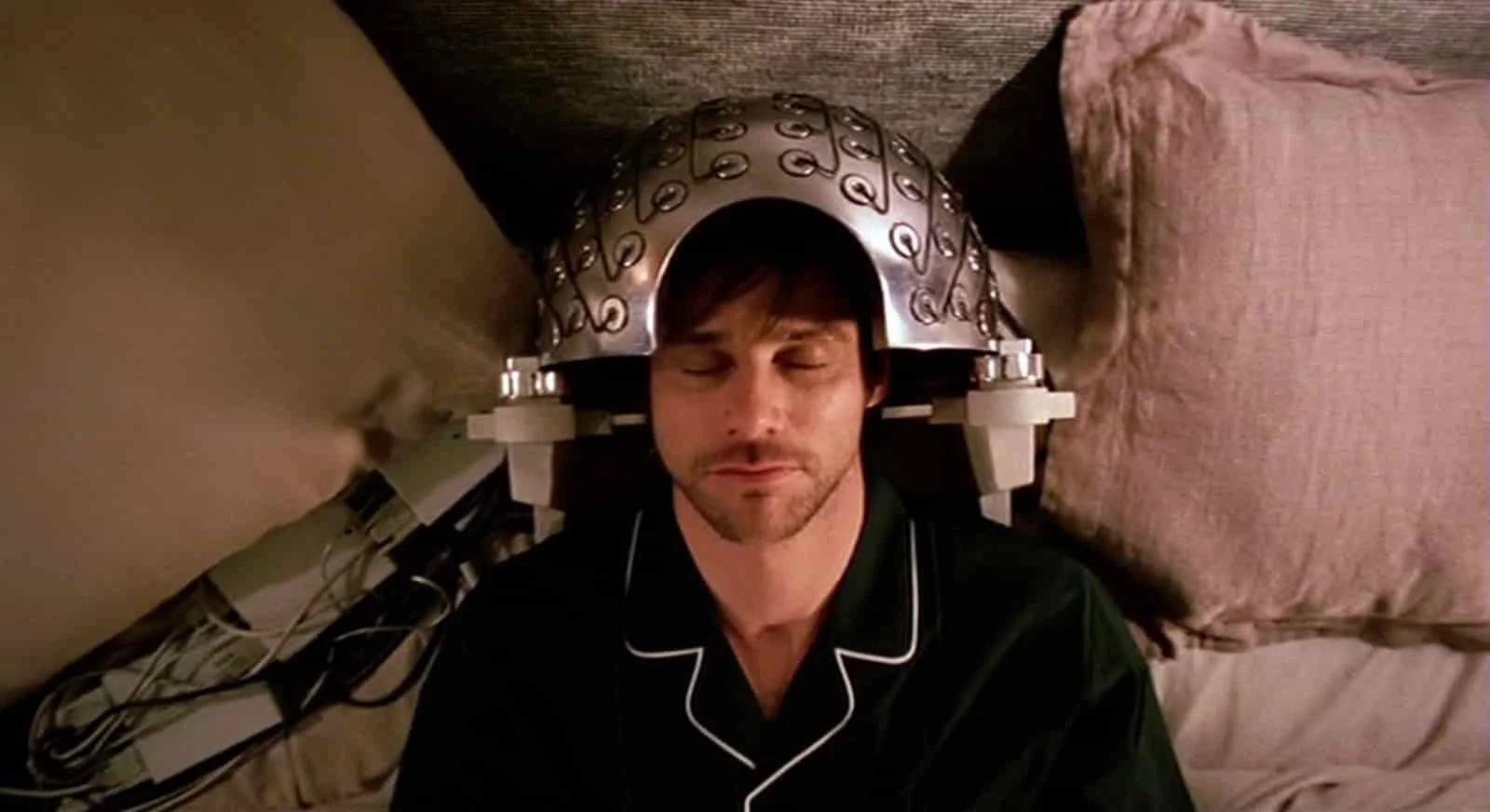
Types of Angles: Overhead Shot Example in Eternal Sunshine of the Spotless Mind
CAMERA SHOTS By ANGLE
Aerial Shot
Whether taken from a helicopter or drone, this is a shot from way up high. It establishes a large expanse of scenery. The opening shots of one of the best cyberpunk movies Blade Runner use them to establish futuristic cityscapes.
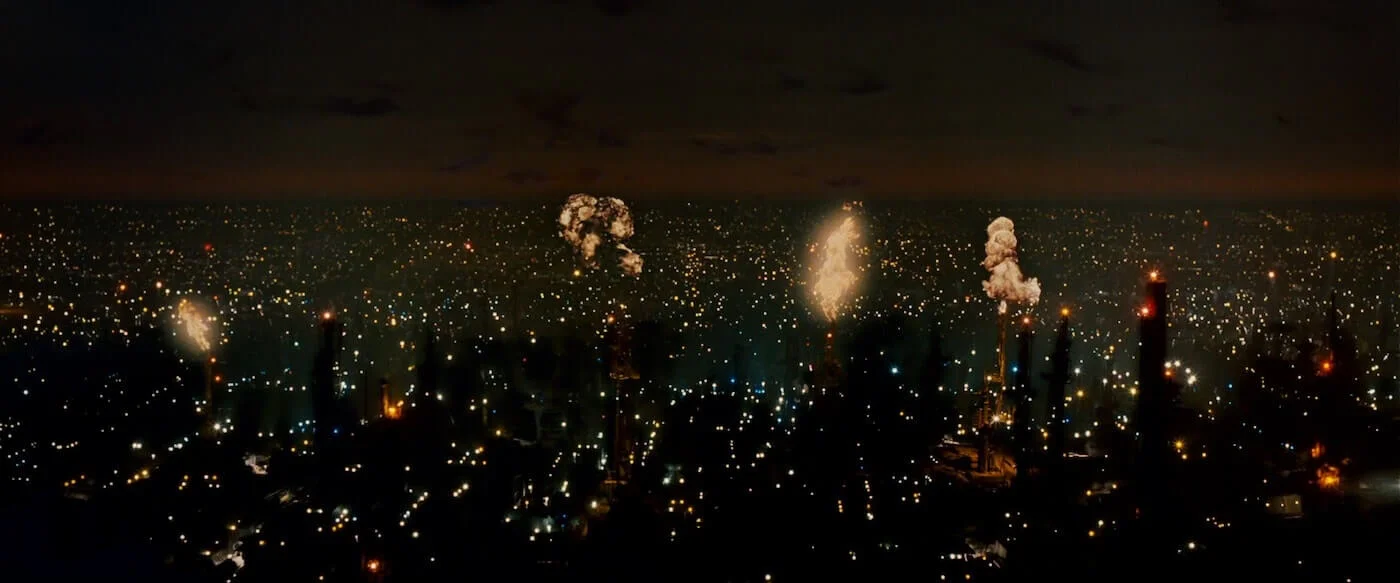
Types of Camera Shot Angles: Aerial Shot Example in Blade Runner
Affordable drones have made aerial photography more accessible to filmmakers. Once considered a big-budget luxury or stock-footage mainstay, original aerial photography is now within reach of almost any production, all thanks to the "rise" of drones (and Sky-net).
5
Camera Movement
MEANING THROUGH MOTION
Types of Camera Movement
The way a camera moves can give meaning to what's happening on screen. You can burst into a room, drone over from on high, pan with a head turn, and dolly-zoom for any revelation.
Camera Movement DEFINITION
What is camera movement?
Camera movement is a powerful filmmaking tool employed to modify the relationship between the subject and the camera frame, with the goal of altering viewer's perspective of space and time for a more impactful and visceral visual storytelling.
Camera moves set auteur directors out from the pack and wind up defining their visual style. But how can you plan all these camera movements so your story stays consistent from scene to scene?
Fimmaking Techniques: Camera Movement • Subscribe on YouTube
TYPES OF SHOTS IN FILM
Static Shot or Fixed Shot
When there’s no movement (i.e. locked camera aim) it’s called a static shot. These camera shots emphasize the appearance and movement of your subject against its environment, and are predominantly captured by being placed on a tripod or a dolly that remains static during the shot.
Static shots work well in every genre, but they're nice for comedy because the actor’s performance and dialogue is often the focus.
Static Shot Example in Step Brothers
TYPES OF SHOTS MOVEMENT
Camera Dolly Shot
A dolly shot is where the camera is affixed to a mechanism called a dolly, which is a specialized push-cart built to handle heavy cinema cameras. A dolly will often have areas to attach seats for the camera operator and assistant camera operators to pull focus and control the camera.
Types of Shots in Film: Chapman Dolly UK
A dolly most commonly will be placed on tracks, and the vast majority of professional dollies have either a hydraulic or even a pneumatic head that can jib up and down during operation.
Camera Zoom Example in movies
Zoom Lens Shot
Zoom shots are camera shots that change the focal length of the lens during the shot. This action can be a zoom out, or a zoom in, but they are different from a push in (or dolly in) because the camera is rarely changing positions, but simply altering the focal length of the zoom lens.
A good way to remember this is that the camera does not zoom, but rather the lens zooms. Now, your iPhone might be able to do a "digital zoom" which is actually just reducing the image quality by moving in on an already captured image which is a huge faux pas in pro filmmaking.
Film Shots Examples: Quentin Tarantino's Zoom Shot
Here's another zoom shot example:
Film Shots Examples: Zoom Shot in The Shining
TYPES OF CAMERA MOVEMENT
Dolly/Zoom Shot or Vertigo Shot
A dolly/zoom shot is where the camera position and focal length of the lens are simultaneously altered to create a warping effect.
Types of Shots in Film: Dolly Zoom • Subscribe on YouTube
Types of Shots in Film: Dolly Zoom • Subscribe on YouTube
TYPES OF CAMERA Shots By MOVEMENT
Camera Pan Shot
Camera pans rotates the camera side to side on a horizontal axis. This can reveal something to your viewer or allow them to follow an action.
Camera Pan Shot Example in Munich
Camera Tilt Example in film
Camera Tilt Shot
A camera tilt is when you move your camera up and down on a vertical axis. So, it’s exactly like a pan, only vertical.
Camera Tilt Shot Example in The Grand Budapest Hotel
TYPES Shots OF MOVEMENT in film
Whip Pan Shot or Swish Pan Shot
A whip pan happens when you pan the camera from one shot to another, creating a motion blur.
Whip Pans Examples • Subscribe on YouTube
Here's an example of a whip pan captured on set:
Behind the scenes on a whip pan setup in La La Land
TYPES OF MOVEMENT in film
Whip Tilt Shot or Swish Tilt Shot
The swish tilt is the same idea as a swish pan, only vertical.
Wes Anderson uses the swish pans and tilts extensively in The Grand Budapest Hotel
TYPES OF Shot MOVEMENT in Movies
Tracking Shot
A tracking shot moves with your subject. Sometimes it follows behind or beside them on a dolly, Steadicam or a gimbal.
Types of Shots in Film: Tracking Shots Examples • Subscribe on YouTube
Here is one of the earliest tracking shot examples:
Tracking Shot Example in Paths of Glory
Types of Camera Movement in Movies
Crab Shots
The crab shot is basically a dolly shot that moves horizontally like a crab.
Crab Shot Example in Oldboy
TYPES OF Camera shots by MOVEMENT
Arc Shot
Arc shots are camera shots where the camera moves around the subject in an arc pattern so as to show more of the surroundings:
Arc Shot Example in The Dark Knight
6
Camera Mechanisms
UNDERSTANDING GEAR REQUIREMENTS
Camera mechanisms is a fancy way of saying camera equipment. Want your camera to glide along a slider? Pushed on a dolly? Swooping with a jib arm? Hovering with a gimbal?
Depending on the gear you use, the feeling of a shot can dramatically change. This is why you'll need to give the mechanism some thought when shot listing. Just remember, camera mechanisms don't just affect the look and feel of a shot, but also your budget, and prep time on set.
Technocranes don't come cheap. And setup time could put your set in a holding pattern if you don't schedule carefully. So, choose your camera mechanisms carefully when you shot list.
Here's a video breakdown of the various types of camera rigs, how they work, and how they add to the "feel" and look of a shot.
Ultimate Guide to Camera Gear • Subscribe on YouTube
Type of Camera Mechanisms
Types of Camera mechanisms in film
1. Sticks / Tripod Shot
Now let’s consider the different mechanisms that will dictate the movement in your camera shots. The most common mechanism is the tripod, or “sticks,” used for static shots and simple pans and tilts.
Tripods and Heads 101
TYPES OF MECHANISMS in Film
2. Camera Slider Shot
A slider is a piece of equipment that “slides” your camera on a vertical or horizontal axis. It’s sort of like a dolly mounted on a tripod that creates smooth, sweeping camera moves.
Camera Slider Shots Example
You can also use a slider with a tripod head to mimic a jib shot, but you want to be careful not to let the weight become unbalanced.
Camera Slider into Camera Jib
TYPES OF Camera MECHANISMS
3. Handheld Camera Shot
Handheld shots are held and moved by a camera operator. They aren’t stabilized and often shaky. They can add a gritty feel to a shot.
Handheld camera shot example
TYPES OF Camera Shots By MECHANISMS
4. Steadicam Shots
A Steadycam shot uses a camera stabilizing device that attaches to the camera operator. It uses a counterbalancing system for smooth and stable camera moves.
Steadycam is the broad name for this camera mechanism, while the Tiffen Steadicam (with an 'i') is the model name used by Tiffen.
Think: Tissue paper vs Kleenex.
Fun fact: the above is known as a proprietary eponym. So, now you're not only learning your camera shots, but also vocabulary. How fun!
Steadycam Shot Example in Goodfellas
3-Axis Gimbal Example
5. Camera Gimbal Shot
Gimbals are another camera stabilizing device that use motorized gyroscopes to reduce friction. It is more compact than a Steadicam and completely handheld. This allows it to fit through tight spaces.
Cinematic Gimbal Shots
Technocrane Shots Example
6. Camera Crane Shots
A crane shot often sweeps up and over a scene. It is a great way to create first or final shot for a film.
Crane Shot Example
Camera Jib Example
7. Camera Jib Shot
A jib is a crane device that sweeps the camera up and over a setting. A jib is similar a crane, but with more limited range and movement. It's compact and utilizes counter-weights.
A jib is a cost-effective way to get an expensive-looking crane shot
Drone Shot Example
8. Drone Shots
These camera shots attach to a drone to fly over or alongside your subject. They're often used for aerial shots or when shooting an exciting car chase. Drones are way cheaper than helicopters and can operate in spaces helicopters can’t.
Drone Shot Example in Skyfall
Cablecam Example
9. Camera Wire Shots
In this shot, the camera moves on a cable or wire for deliberate, smooth moves. Like drones, wires get much closer to the action than helicopters. These are often used in live concerts and sporting events.
Wire Shot Example
Up next
How to create a professional shot list
Having knowledge of the types of shots in film, and why they’re used, is the building block to good storytelling. Each shot is a brushstroke for painting a vision. Be intentional when you select your shots.
Up next, we'll walk you through the process of shot listing like a pro. Everything from selecting camera specs, to properly estimating prep and setup times. We provide a free shot list template to get you started.
Up Next: Create a Shot List like a Pro →
Showcase your vision with elegant shot lists and storyboards.
Create robust and customizable shot lists. Upload images to make storyboards and slideshows.
